Travel With - The Holiday Story

16 Different Types of Tourism in India
Do you know that India has one of the world’s seven wonders? Yes, It’s the incredible Taj Mahal in Agra, Delhi. In last year’s statistics, India holds 34th out of 140 countries. It’s the pride of Indians. This article explains different types of tourism in India and the best places you can visit.
The tourism industry now become the fastest-growing industry in the world. In India, many types of tourism play major economic importance in rapid development.
India in South Asia has a wide variety of tourism branches. The Ministry of Tourism and the state government have identified many niche products to attract tourists. The industry aims to develop India as the finest tourist destination all over the globe. Let’s find out the important types of tourism in India.
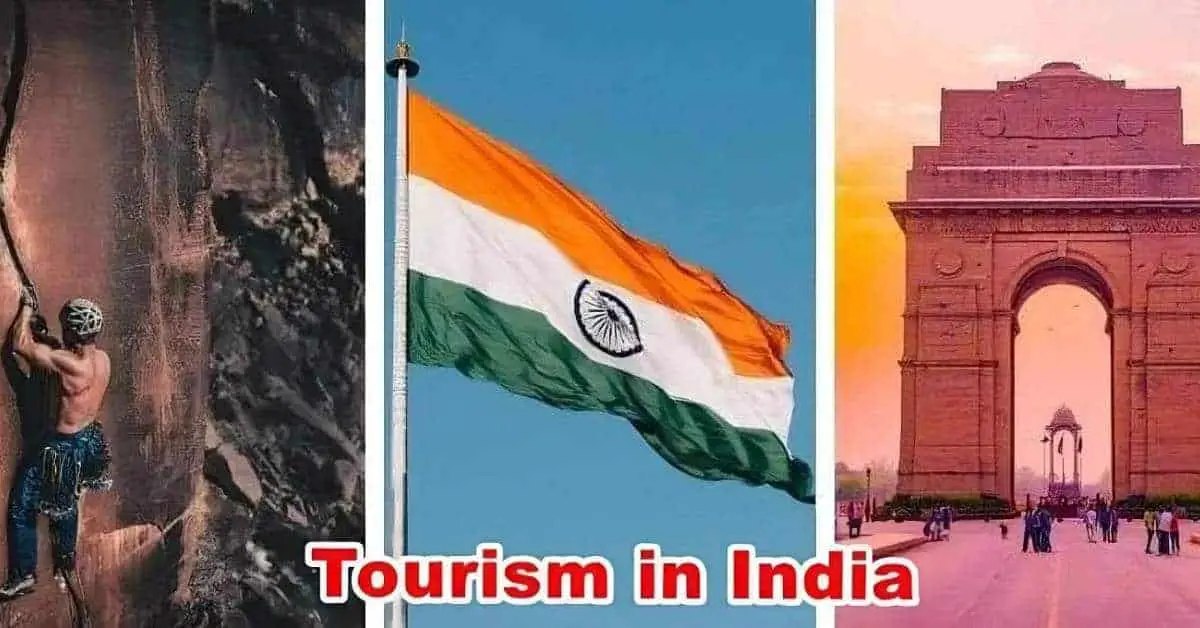
Types of Tourism in India
1. adventure tourism .
There are many types of adventure tourism in India because of the diverse topography. These will help you to cut down on your monotonous urban life. Adventure tourism is one of the major forms of tourism. Many Indian tourism packages are found for these adventurous trips.
Types of Adventure Tourism in India
There are lots of adventure activities available like –
Rafting or Kayaking, Caving, Heli-Skiing, Trekking, Waterfall Rappelling, Skydiving or Scuba diving, Paragliding, Hot Air Ballooning, etc.
Some adventurous tourist places are –
- Wildlife Safari at Jim Corbett National Park , Bandhavgarh, Kanha, and Pench National Park.
- Treks at Ladakh, Uttarakhand, Sikkim, Himachal Pradesh, and Kashmir.
- Motorbike expeditions on the Leh-Manali highway and through South and West India.
- River Rafting in Uttarakhand and the Kolad village.
- Scuba Diving in Port Blair Andaman, Nicobar Islands , Goa, and Murudeshwar Karnataka.
- Hot Air Ballooning ride in Jaipur, Rajasthan and Lonavala in Mumbai.
- Camping in Uttarakhand, West Bengal, Rajasthan, Karnataka, and Himachal Pradesh.
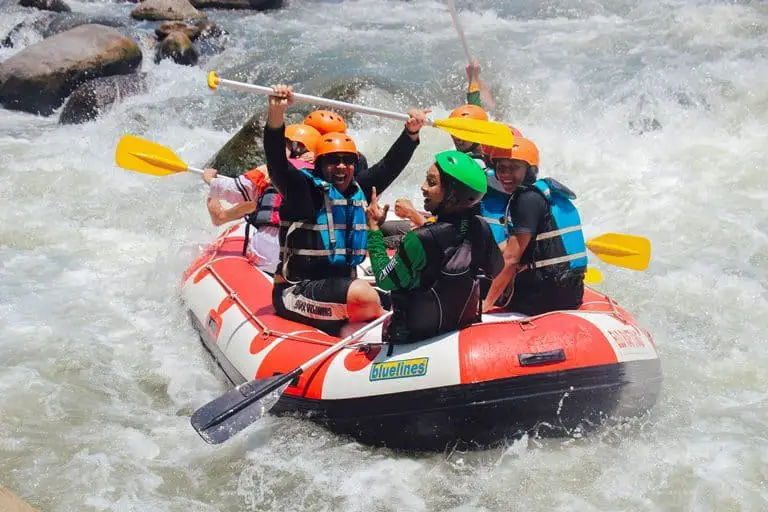
2. Wildlife Tourism
India is not only a diverse country but also a wildlife enthusiast. About 4% of India’s total land, 90 forests are national parks , and 482 are wildlife sanctuaries. As per statistics, India has 60-70% of the world’s biodiversity.
In these forests, you can find Asian elephants, Asiatic lions, Royal Bengal tigers, sloth bears, Indian rhinos and leopards, etc. There are hundreds of bird species found in sanctuaries/ jungles. These places became the best tourist spots for birdwatching. Wildlife tourism areas:-
- Jim Corbett National Park (Uttaranchal),
- Bandhavgarh National Park and Kanha National Park in Madhya Pradesh,
- Kaziranga National Park – Assam
- Gir National Park in Sasan Gir (Gujarat),
- The Great Himalayan National Park – Himachal Pradesh
- Sundarbans National Park – West Bengal
- Ranthambore National Park in Sawai Madhopur, especially for bird species.
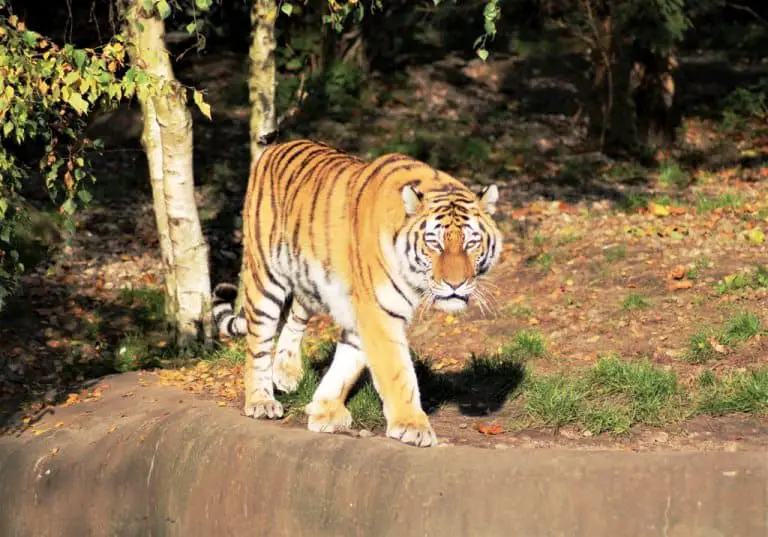
3. Eco-Tourism
India, a country of diverse geography, offers several tourist destinations that relieve stress and revitalize you.
There are many ways to enjoy nature. Places like the Himalayas, North-East India, Kerala, Andaman and Nicobar Islands, and Lakshadweep Islands, where you can enjoy the treasures of nature in spiritual ways. It is called nature-based tourism.
Thenmala in Kerala is India’s first planned ecotourism destination for eco-tourists and nature lovers. There, you can be a part of several adventurous activities. Eco-tourism places are:-
- Kerala Backwaters
- Munnar, Kerala
- Coorg, Karnataka
- Galgibaga Beach, Goa
- Chilika, Odisha
- Khangchendzonga Biosphere Reserve, Sikkim
- Jotsoma village in Kohima, Nagaland
- Tea Gardens, Jalpaiguri and Darjeeling
- Sunderban Tiger Reserve, Sunderban
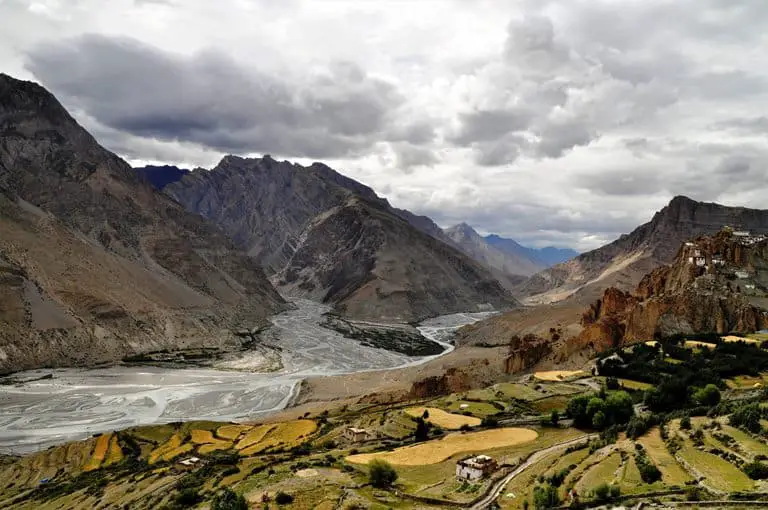
4. Medical Tourism
In Medical tourism, international tourists come to our country for healthcare. In the meantime, they visit tourist places in that city/state. This international tourism is rapidly growing in India.
Recently, private hospitals have gotten a massive boost from medical tourism. Because of this demand, they increase their total employment, transportation, etc. Medical Services requested by travellers, including complex surgeries.
According to a Medical Tourism Market Report, India is the leading tourism destination for the highest quality Medical Treatment at the lowest cost.
Last few years, Indian medical tourism was estimated at 3 billion and is expected to reach $6-7 billion in the upcoming years. According to a CII-Grant Thornton report, 34% of medical tourists are from Bangladesh and Afghanistan, 30% from Russia, and the Commonwealth of Independent States. The rest are from Africa and the Middle East.
The most visited hospitals for Medical tourism are:-
- SRI RAMACHANDRA MEDICAL CENTRE (SRMC) – CHENNAI
- BLK Super Specialty Hospital, Pusa Road, New Delhi
- Fortis La Femme, Greater Kailash, New Delhi
- CHRISTIAN MEDICAL COLLEGE VELLORE CHENNAI
- NARAYANA INSTITUTE OF CARDIAC SCIENCES (NICS) – BANGALORE
- TATA MEMORIAL HOSPITAL Mumbai

5. Wellness Tourism
India is one of the top places in the world known for wellness. Popularity increases as people try to move towards a healthier lifestyle. Yoga, Meditation, and Ayurveda are the oldest and most effective ways of treatment. Both domestic and international tourists explore those methods.

Every year, many tourists from the United Kingdom come here to join these classes. Visitors are very concerned about Visa Policy and Valid Passports because this tourism is a time-consuming course.
If you plan to depress anxiety and revive feeling emotion, we have compiled a list of top wellness destinations in India that you must visit. The places are:-
- Ayurvedagram Heritage Wellness Center, Bengaluru, Karnataka
- Shreyas Yoga Retreat, Bengaluru, Karnataka
- The Leela, Kovalam, Kerala
- Sarovaram Ayurvedic Health Center, Ashtamudi, Kerala
- Vana, Dehradun, Uttarakhand
- Ananda in the Himalayas, Rishikesh, Uttarakhand
- Devaaya, Goa
- Nimba Nature Cure, Mehsana, Gujarat
- Wildflower Hall, Shimla, Himachal Pradesh
- Amarvilas Spa, Agra, Uttar Pradesh
6. Cultural Tourism / Heritage Tourism in India
Cultural and religious India is the motherland of the world. The country is enriched with unique cultural vibrancy with various world heritage sites. It has historical significance as well. Those things attract travellers globally. Our Cultural and Heritage Tourist Attractions are:-
- Taj Mahal New Delhi (One of the seven wonders sites of the world)
- Khajuraho Group of Monuments, Madhya Pradesh
- Mahabodhi Temple Bihar
- Red Fort New Delhi
- Chittorgarh Fort and Kumbhalgarh Fort of Udaipur.
- Hampi Vijayanagara Empire, Karnataka
- Kolkata: The City Of Joy (the capital was during British rule)
- Ajanta Ellora Caves, Maharashtra
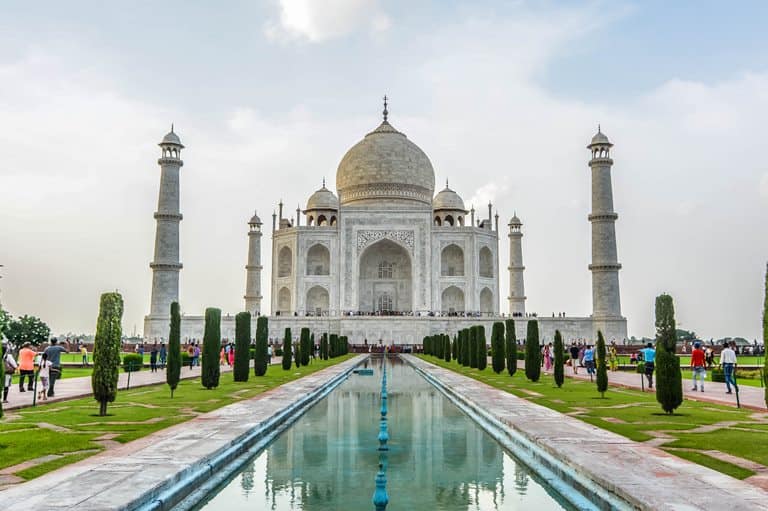
7. Religious Tourism / Pilgrimage Tourism
India is called a ‘country of faith.’ You can find a spiritual environment all over the country. Dharma creates this environment; Karma carries and forgives. India is a secular country with multiple religions. We live here in ultimate peace and adequacy. For that reason, spiritual tourism has a vital role in tourism development.
The presence of many temples, mosques, gurdwaras, churches, and monasteries in India motivates travellers to come here. The most attractive Religious and Pilgrimage Tourism spots are: –
- Golden Temple/Swarn Mandir/Harmandir Sahib in Amritsar
- Velankanni Church
- Amarnath Cave
- Hemkund Sahib
- Sun Temple (Surya Mandir) in Konark
- Dargah Gharib Nawaz in Ajmer
- Vaishno Devi Temple
- Jammu Kashmir
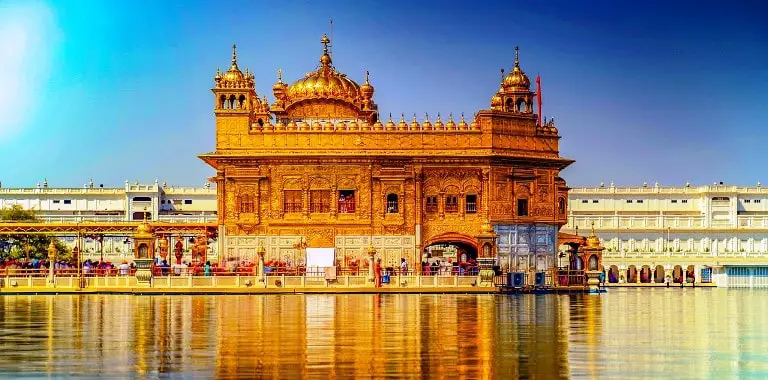
8. Business Tourism
Like other travel destinations in India, business tourism plays a unique role. Nonstop flights from several foreign countries prove the potentiality of Indian business tourism. As a result, companies choose India for growing business and meetings.
International companies want to spread their business in New Delhi, Hyderabad, Kolkata, Gurgaon, Pune, Mumbai, Ahmedabad, Bangalore, etc.

9. Cruise Tourism
In India, Cruise tourism is a growing niche tourism product. It encourages and attracts tourists with a specific interest. The Ministry of Tourism and state governments are developing infrastructure to flourish cruise tourism in India. India’s vast and delightful coastline and virgin forests can be a place of interest for cruise travellers.
- The Golden Triangle Cruise from New Delhi
- Andaman Islands Glass Bottom Cruise
- Brahmaputra River Cruise from Guwahati
- Sunderbans Boat Cruise from Kolkata
- Kerala Backwater Cruise
- Ganges River Cruise from Kolkata
- Chilika Lake Cruise from Orissa
- Kochi Cruise
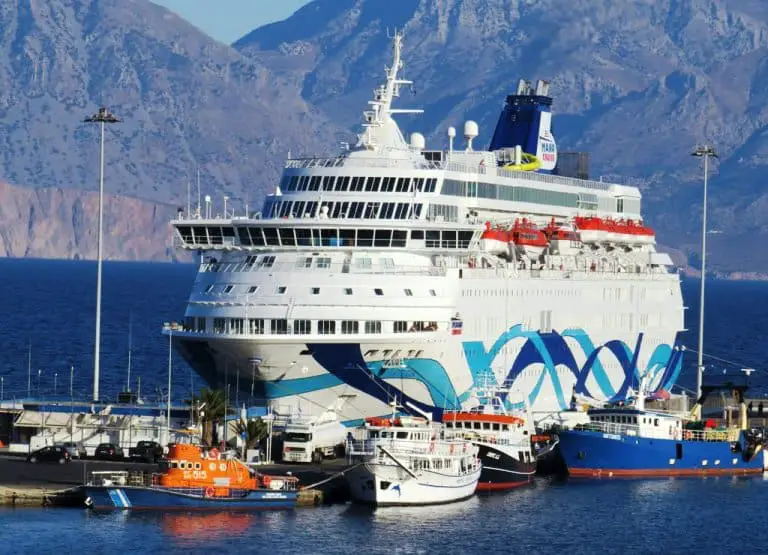
10. Culinary Tourism
A decade ago, culinary travelling was still unknown in the Indian subcontinent. Famous for its distinctive taste and spice, Indian cuisine is now famous worldwide. With the evolution of the tourism sector in India, this is one of the niche tourist products on entry.
In India, cuisine can be divided into North Indian and South Indian food. We can subdivide it into regional sub-groups like Rajasthani, Chettinad, Bengali, Punjabi, Sindhi, Gujarati, Hyderabadi, Mughal, Kashmiri, and Bengali. The best food and beverage in India is:-
Indian thali, Biryani, Stuffed Paratha, Samosa, Masala Dosa, Palak Paneer or Sag Paneer, Chole Batura, Dum Aloo, Chaats, Rasgola, Gulab Jamun, Rasmalai, Jalebi, Gajar ka Halwa, Kulfi and lots more.
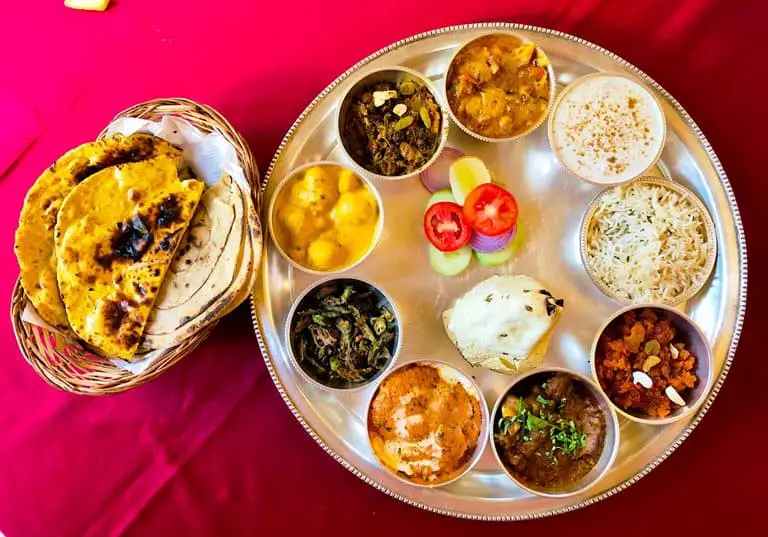
11. Dark Tourism
India has complex history makes it the perfect choice for dark tourists. India’s many travelling spots are included in the “dark tourism.” It is a new type of tourism .
Dark tourism is connected with places that have experienced death, pain, and mystery. It is famous for those interested in history and wanting to discover dark, untold past stories. It might be deadly and terrifying, but the destination becomes popular because of its typical nature and experience. We have a list of several black tourist places in India; they are:-
- Jallianwala Bagh, Amritsar
- Cellular Jail, Kala Pani, Andaman & Nicobar Islands
- Roopkund, Skeleton Lake, Uttarakhand
- Union Carbide subsidiary plant, Gas Tragedy, Bhopal
- Wagah border crossing point and ceremonies
- Taj Palace Hotel, Mumbai

12. Film Tourism
India is famous for its many tourism classifications, including medical tourism, adventure tourism, eco-tourism, cultural tourism, and film tourism. The country has the world’s largest film producer, producing over 1800 films annually. Indian film is known as Bollywood.
We expect India to receive one million film tourists by the coming year. When a viewer is persuaded to visit a particular location after watching a movie, they call it a ‘Filming destination or film tourism.’ Famous places are:-
- Ramoji Film City Hyderabad
- India Gate, Delhi
- Marine Drive, Mumbai
- Fort Aguada, Goa
- Udaipur City Palace, Rajasthan
- Hadimba Mandir, Manali
- Munnar Tea Plantations, Kerala
- Nahargarh Fort, Jaipur
- Rohtang Paas, Himachal Pradesh
- Pangong Lake, Ladakh
- Gulmarg, Kashmir
- Dakshineswar Kali Temple & Howrah Bridge, Kolkata
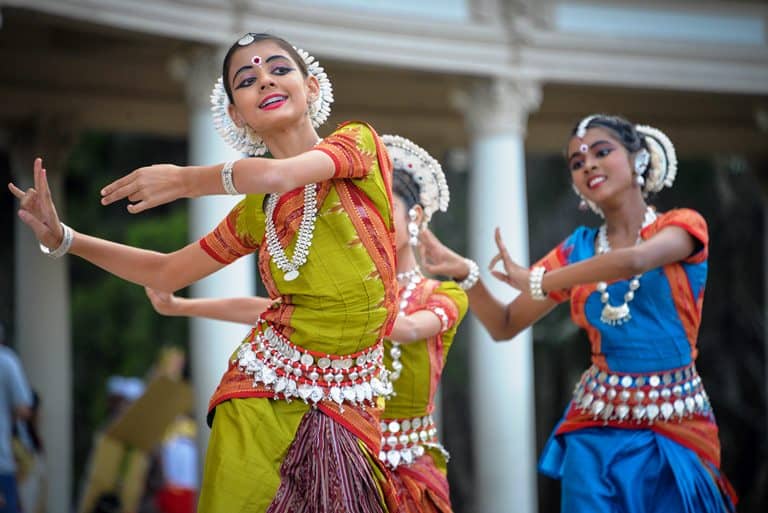
13. Sports Tourism
India always attracts tourists with its rich cultural heritage, food, and architectural wonders. But, some years ago, no one thought sports could also attract foreign tourists.
All over the world, Sports tourism has come out as the most important tourism service sector. Eventually, it spread all over the country and also made a splash in India.
Adventure sports tourism is currently growing at about 12%, as announced by the Ministry of Tourism. This multi-trillion industry will show a massive bounce in the coming years sports trade analysts predict.
This tourism industry in India became the employment generation sector. They focus on the infrastructure development of different types of tourism in India. Many Internationally famous sports are organized here like:-
- Commonwealth Games 2010
- Cricket World Cup 2011
- Men’s Hockey World Cup, AIBA
- Indian Premier League (IPL)
- Pro Kabaddi League
- Indian Super League
- Badminton World Federation (BWF) Tour Lucknow
- ICC Champions Trophy
Many Internationally famous sports tourism places is
- Rishikesh – White Water Rafting
- Rishikesh – Bungee Jumping
- Auli – Skiing
- Kasauli – Hang Gliding
- Ladakh – Trekking
- Gulmarg – Ice Climbing
- Andamans – Scuba Diving
- Goa – Water Sports
- Pushkar – Hot Air Ballooning
- Mysore – Skydiving
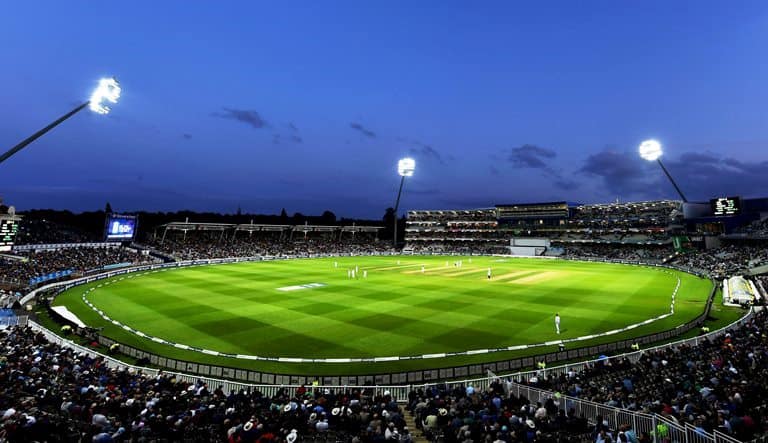
14. Educational Tourism
India is an excellent destination for educational tourism. Our country offers a variety of possibilities and topics for students. Here, travellers can visit many astonishing and breathtaking monuments like the Taj Mahal, forts and palaces of Rajasthan, mausoleums and mosques, beautiful temples related to different religions of India, and old churches.
Similarly, visiting thousands of old rural villages and their houses, castles, palaces, and life stories would be an incredible experience.
So, an education tour in India will surprise students and give them a broad knowledge of the subject.
- Dholavira and Lothal, Gujarat
- Hampi, Karnataka
- Forts and Palaces of Rajasthan
- Rajasthan Tribal Villages Tour
- Treasure of Nature and Heritage Tour
- Medieval Heritage Tour
- Sun Temple Tour
- Mawlynnong, Meghalaya
- Kaziranga National Park, Assam
- Ajanta Ellora Caves Aurangabad
- Nalanda, Bihar
- Kolkata, West Bengal
15. Yoga school and retreat Tourism In India
Yoga is a healthy habit for daily life. Now everybody wants to habit this exercise. Yoga san has been practised in India since ancient times. It’s also mentioned in many Biblical books. So many yoga practitioners travel to India to know and practice it correctly. Some include it at the top of the bucket list.
The southern city of Mysore has accommodation for several schools that teach Kayakalpa yoga , Ashtanga yoga, and yoga ashrams found all over India. Tourists come here for weeks, months, or even years. They also complete a certificate program or a year-long training program. Some famous yoga schools in India are listed below.
- Kayakalpa yoga school in Tamil Nadu
- Ashtanga Institute
- Ramamani Iyengar Memorial Yoga Institute
- Bihar School of Yoga
- Yoga Institute Mumbai
- Parmarth Niketan
- Krishnamacharya Yoga Mandiram
- Sivananda Yoga Vedanta Dhanwantari
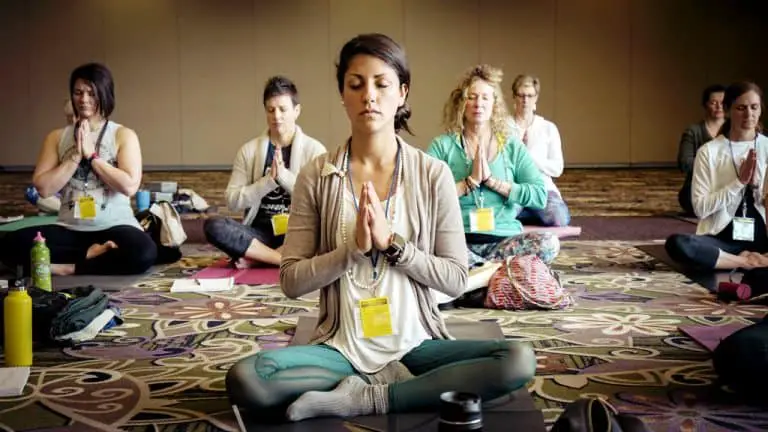
16. Recreation Tourism
One of the main goals of recreation tourism is a physical and intellectual renaissance in humans. Many people spend their vacations on recreational tourism. Tourists include themselves in physical activity, sports, cultural events, visiting castles, museums, wine testing, etc. Some places for recreational tourism in India.
- Goa – Watersports, Flyboarding, fishing, dolphin tours, cruising, island hopping, long walks.
- Sikkim – cable car ride, paragliding, Yack safari, hot springs.
- Munnar – Treehouse, visit a tea plantation, mountain biking, shikara ride.
- Coorg – Elephant Training Camp, Nalknad Palace, Madikeri Fort.
- Ooty – extract honey, sip tea, camping, nightlife.
- Darjeeling – trekking, toy train, eating thukpas and momos, shopping.
- Spiti Valley – fossil hunting, camping, Stargazing, visit Dhandar Lake, visit a monastery.
New Types of Tourism
In this article, we already discussed the verities of tourism in India. However, some tourism sectors have emerged in them, such as Cruise Tourism, Sports Tourism, Film Tourism, Dark Tourism, and Culinary Tourism. Till today, those types of the tourism industry have shown good service under sustainable tourism.
Four main types of tourism in India
We can identify various types of tourism in India, but four main types of tourism are popular: –
- Adventure Tourism
- Medical Tourism
- Cultural Tourism / Heritage Tourism India
- Religious Tourism / Pilgrimage tourism
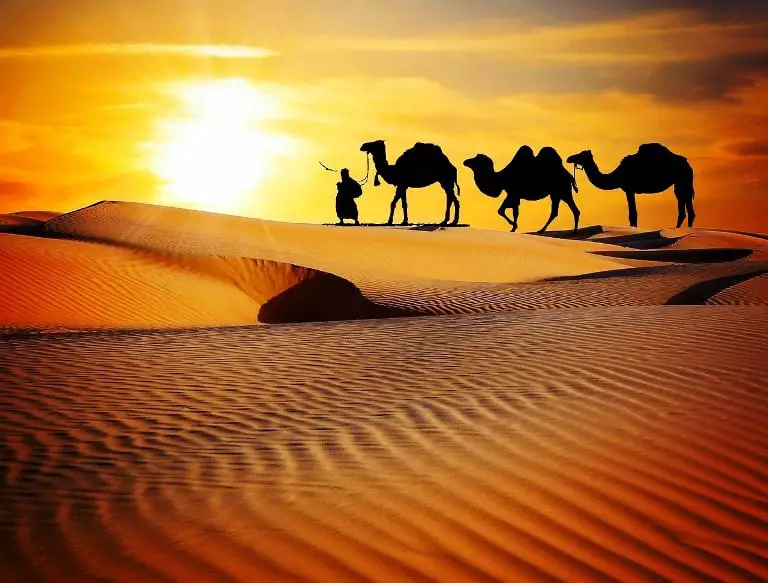
Types of Tourism Resources in India
Over the years, India has become a major tourist destination. India has grown with a tremendous flow of tourists globally. There are many types of tourism resources available in India, such as natural resources, adventure, human culture, pilgrimage, wildlife, etc. Here, we talk about three types of tourism resources as
- Natural resources
- Human resources
- Adventure resources
Natural Resources
India is enriched with huge minerals, coal, iron, manganese, copper, and mica. In addition, we have natural forest resources like – sandalwood trees in Karnataka, wood and wooden products, and Lac (sealing wax) in Bihar, Madhya Pradesh, and Uttar Pradesh. Moreover, many rivers have flowed through India, so it is easy to generate hydroelectric power.
Human Resources
Human resources are important resources because they have reproducible ability. And India has the second-largest population in the world. So every kind of person is here. They have different thinking, creating, and inventing abilities, which is very powerful for a country.
Adventure Resources
India has a diverse landscape; thus, the country has enormous options for adventure tourism, like – Safari, Trekking, Ice Skating, Paragliding, Scuba Diving, Climbing, White Water Rafting, etc.
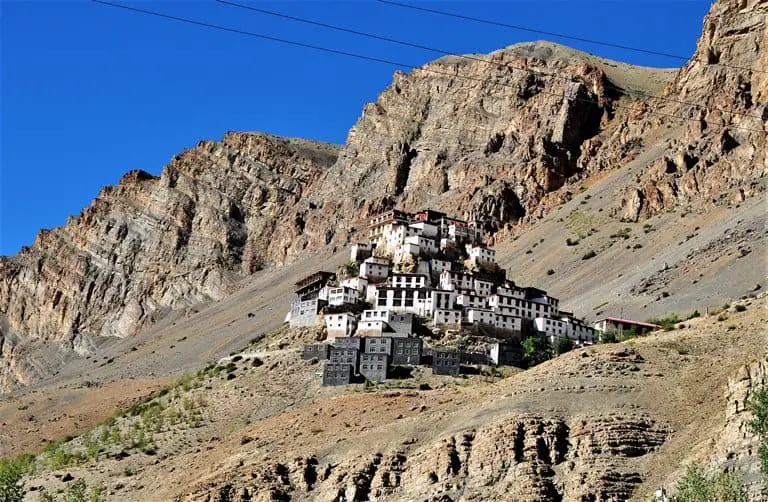
Development of Different Types of Tourism in India
India is a top-rated tourist destination in the whole world. Every year, thousands of travellers come here for different tourism. India has unique types of tourism, and they are constantly developing this industry, goods, and services. As per the statistics, India is an emerging tourism country globally.
The country has taken more security action for the different tourism sectors like – adventure tourism, medical tourism, sports tourism, etc.
India has various niche tourism industries, such as – cruise tourism, culinary tourism, and dark tourism. The Ministry of Tourism in India and state governments are trying to boost all these tourism sectors by giving them world-class facilities.
Importance of Tourism
Tourism is a kind of movement of travellers from one destination to another. Tourists usually visit this place temporarily. The travel destination is mostly away from their living and workplace. In the destination, travellers get almost every service like the hotel, restaurant, transport facility, tour guide, tour operators, etc.
Tourism does not mean travel to a particular place. It also contains all activities conducted during travelling. Tourism is most important to keep us relieved, relaxed, and stress-free.
Tourism in Kerala
Kerala is called “God’s own country”! It is on the alluring Malabar Coast of India. The rich and diverse culture of Kerala is known to all of us. When you come to Kerala, the natural beauty will amaze you. Thriving green wildlife, charming hill station, ancient Ayurveda healthcare method, unique dance forms, music, handicrafts, tourism products, and yummy veggie non-veggie food will surprise you.

The state is one of the ten paradises in the world. The southern states of India have everything they need for travel. Worldwide backwaters of Alappuzha, Kovalam, and Varkala Beaches are lifetime experiences in the Kerala tour.
In Kerala, the best wildlife sanctuaries and mountains in India are found. Moreover, Kerala has similarities between British, Chinese, Arabic, and Portuguese cultures, which you will find nowhere else in India.
Travelling to Kerala will revitalize your body and soul with its unique cultural and geographical features. This type of tourism in India is prevalent throughout the year.
Types of Tourism in Kerala
There are various kinds of Tourism packages found in Kerala India . Such as
- Kerala Hill Station Tourism
- Kerala Beach Tourism
- Kerala Backwater Tourism
- Kerala Culture Tourism
- Kerala Home Stay Tourism
- Kerala Medical Tourism
- Kerala Health Tourism
- Kerala Farm Tourism
- Kerala Ecotourism
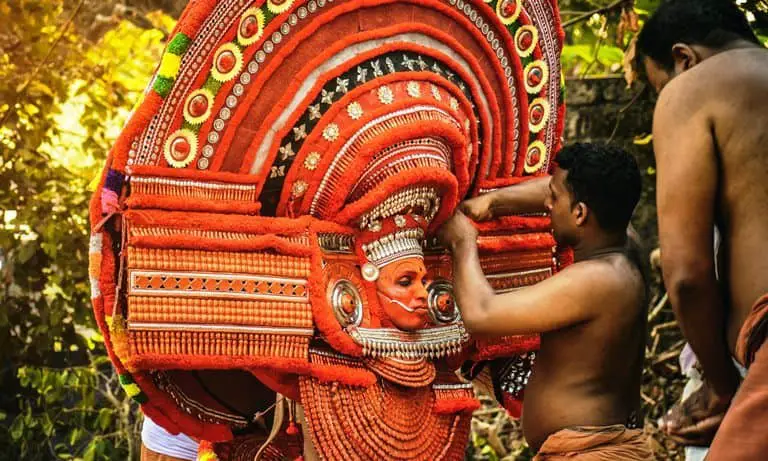
How many Types of Tourism are there in India?
There are many types of tourism in India. In between, 16 types of tourism are the most famous. In the coming days, tourism will become a major part of our economy.
What are the reasons behind Film Tourism?
There are vast classifications of tourists, and some are very much interested in film tourism. Tourists are delighted to recall all the film scenes when they visit the shooting spot. Many big-budget and blockbuster film locations are intact and preserved as they were in the film.
What is the most popular type of tourism?
The most popular type of tourism is healthy tourism. It is Worldwide famous. This tour is for medical patients to feel relaxed. Well-known health tourism countries are Brazil, Mexico, Panama, Costa Rica, India, etc. Tourists can also visit different ashrams and yoga centres during this travel time. Those are also a part of medical tourism.
Which state has the highest tourism in India?
Tamil Nadu has the highest number of tourists in India. According to the statistics of 2018, about 21% of the total tourists visit this state. Nilgiri Mountain, Ooty, Chennai, Yercaud hill stations, Kodaikanal.
After that, Uttar Pradesh is the second most visited place in the country. According to statistics, about 15% of the total tourists visit this state. The most popular sites are Delhi, Taj Mahal, Agra, Varanasi, and Lucknow.
Maharashtra has the third-highest number of tourists in India. The most visited places are – Ajanta Caves, Ellora Caves, Aurangabad, Bollywood and colonial architecture, Elephanta Caves, and Chhatrapati Shivaji Terminus.
What Are the Main Attractions in India?
India is famous for its history, culture, and tradition. The topmost tourist attractions of India are:-
The Taj Mahal, Agra The Holy City of Varanasi Harmandir Sahib: The Golden Temple of Amritsar The Golden City Jaisalmer The Red Fort New Delhi Mumbai, The Gateway Of India Mecca Masjid Hyderabad Amer Fort, Jaipur Beaches of Goa Agra Fort The Ellora Caves, Aurangabad Mysore Palace. Marble Palace/ Victoria Memorial Kolkata
Kindly Stay 5 Seconds More and Share this Article.
HI TRAVELLER …Myself Ruma Dey Baidya. I’ve been backpacking for the last 20+ years. Photography and travelling have been my passion since my childhood. Whenever I got an opportunity, I never missed it. I am not a solo backpacker, so I always try group travel. I prefer budget travel, and it also helps me to save expenses. We know that memories are not constant, so I decided to document them and created this travel diary. This website [ TheHolidayStory ] is dedicated to those who passionate about travel like me. Please feel free for any information related to my blog. I am always happy to reply. Mail id – ruma[@]theholidaystory.com
Leave a Reply Cancel reply
Your email address will not be published. Required fields are marked *

Tourism in India- Impacts and Insights
Disclaimer: Some posts on Tourism Teacher may contain affiliate links. If you appreciate this content, you can show your support by making a purchase through these links or by buying me a coffee . Thank you for your support!
Tourism in India is big business and it is growing year on year. But what is the appeal and how can tourism best be managed here? Read on to find out…
- Overview of India
The tourism industry in India
- Why people travel to India
Most popular types of tourism in India
Most popular tourist attractions in india.
- What types of tourists travel to India
- Crime and safety in India
- Required budget to visit India
- General tips for visiting India
10 interesting facts about India
- 10 FAQs about tourism in India
Tourism in India
Welcome to India! A land of diverse landscapes and cultures. From the snowy peaks of the Himalayas to the sunny beaches of Goa. Dive into a world where every corner has a story. Let’s embark on this adventure together!

Geography of India
India is a country located in South Asia and is the seventh-largest country in the world by land area. It has a diverse landscape and a wide range of climates, ranging from tropical in the south to alpine in the north.
India is bordered by the Indian Ocean to the south, the Bay of Bengal to the east, and the Arabian Sea to the west. It shares land borders with Pakistan to the west, China , Nepal, and Bhutan to the north, and Bangladesh and Myanmar to the east.
The northern region of India is dominated by the Himalayan mountain range, which includes the highest peak in the world, Mount Everest. The Himalayas also act as a natural barrier, separating India from the rest of Asia. The central region of India is made up of the Deccan Plateau, which is bordered by the Eastern and Western Ghats mountain ranges.
The Indo-Gangetic plain is a vast, fertile region that stretches across northern and eastern India and is watered by the Ganges, Brahmaputra, and Indus rivers . The western part of India is dominated by the Thar Desert, while the southern region is known for its tropical forests and coastal plains.
India has a rich diversity of flora and fauna, with a range of animal species including tigers, elephants, rhinoceroses, and various species of monkeys. The country is also home to a diverse range of ethnic and linguistic groups , with over 1,600 languages spoken throughout the country.

Tourism is a significant contributor to the Indian economy, with the sector accounting for 9.2% of the country’s GDP and generating over 40 million jobs in 2019. Here are some statistics related to the tourism industry in India:
- Foreign tourist arrivals: In 2019, India received over 10.9 million foreign tourist arrivals, which was a 3.2% increase compared to the previous year.
- Domestic tourism: Domestic tourism in India is also significant, with over 2.3 billion domestic tourist visits in 2019.
- Tourism revenue: The total tourism revenue generated in India in 2019 was over USD 28 billion, with foreign exchange earnings from tourism standing at USD 19.9 billion.
- Top tourist destinations: Some of the top tourist destinations in India include the Taj Mahal in Agra, the Golden Temple in Amritsar, the beaches of Goa, and the backwaters of Kerala.

India is a diverse country with a rich cultural heritage and natural beauty, which offers a wide range of tourism options. Here are some of the most popular types of tourism in India:
Heritage tourism in India
India has a rich history, and there are many historic sites and monuments, such as the Taj Mahal, Qutub Minar, and Ajanta and Ellora Caves, that attract tourists interested in learning about the country’s past.
Cultural tourism in India
India is home to a diverse range of cultures, traditions, and customs, and tourists come to India to experience its rich cultural heritage, such as its music, dance, and cuisine.
Adventure tourism in India
India offers a range of adventure tourism options, including trekking in the Himalayas, white-water rafting, wildlife safaris, and skiing.
Spiritual tourism in India
India is a land of spirituality, and many tourists come to India to explore its spiritual heritage, visit ashrams, and participate in yoga and meditation.
Medical tourism in India
India is a popular destination for medical tourism , with world-class healthcare facilities and affordable medical treatments attracting patients from around the world.
Eco-tourism in India
India has a diverse range of ecosystems, from tropical forests to deserts , and tourists come to India to explore its natural beauty and wildlife, such as the backwaters of Kerala, the Sunderbans, and the Jim Corbett National Park.
Beach tourism in India
India has a long coastline and many beautiful beaches, such as Goa, Kerala, and Andaman and Nicobar Islands, which attract tourists looking for sun, sand, and surf.

India has a rich cultural and historical heritage, and is home to many popular tourist attractions that draw visitors from around the world. Here are some of the most popular tourist attractions in India:
- Taj Mahal – Located in Agra, the Taj Mahal is one of the most iconic and beautiful buildings in the world. It was built by the Mughal emperor Shah Jahan as a mausoleum for his wife Mumtaz Mahal.
- Jaipur – The capital city of Rajasthan, also known as the “Pink City,” is famous for its stunning architecture, forts, and palaces, including the City Palace, Hawa Mahal, and Amber Fort.
- Golden Temple – Located in Amritsar, the Golden Temple is the most sacred site of Sikhism and is renowned for its stunning architecture and the warm hospitality offered by the Sikh community.
- Kerala Backwaters – The backwaters of Kerala are a network of interconnected canals, lagoons, and lakes that provide a scenic and relaxing experience for tourists.
- Khajuraho Temples – The Khajuraho Temples are a group of Hindu and Jain temples located in Madhya Pradesh that are famous for their intricate carvings and sculptures.
- Varanasi – Located on the banks of the River Ganges, Varanasi is one of the oldest continuously inhabited cities in the world and is a major pilgrimage site for Hindus.
- Goa – Known for its stunning beaches, vibrant nightlife, and Portuguese architecture, Goa is a popular tourist destination for both domestic and international tourists.
- Ajanta and Ellora Caves – Located in Maharashtra, the Ajanta and Ellora Caves are a group of ancient rock-cut Buddhist and Hindu cave temples that are UNESCO World Heritage sites.
- Jim Corbett National Park – Located in Uttarakhand, the Jim Corbett National Park is famous for its tigers, elephants, and other wildlife, and is a popular destination for wildlife enthusiasts.
- Hampi – Located in Karnataka, Hampi is a UNESCO World Heritage site and is known for its stunning ancient ruins and temple complexes.
These are some of the most popular tourist attractions in India, but there are many more that visitors can explore during their trip to the country.

Impacts of tourism in India
It is important that we consider the positive and negative impacts of tourism in every destination, including India. So, lets take a look at what India is doing right and what they can do better.
Social impacts of tourism in India
One of the beauties of tourism in India is the rich cultural exchange it fosters. Visitors get a first-hand experience of India’s deep-rooted traditions, while locals often get a broader understanding of global customs.
Yet, as with any dialogue, there can be misunderstandings. While tourism in India brings about cultural appreciation, there’s also the risk of stereotyping or commercialising certain traditions just to cater to the tourist gaze.
Environmental impacts of tourism in India
India, with its vast forests , serene backwaters, and majestic mountains, promises a natural retreat like no other. Tourism in India has, in many ways, shone a spotlight on the need to conserve these pristine pockets. National parks and wildlife sanctuaries thrive on tourist revenue.
However, there’s a balance to strike. The surge in tourism can lead to challenges like littering in the Himalayan trails or water pollution in the popular beaches of Goa. Each footprint, while seemingly small, can have lasting impacts, making sustainable tourism in India not just an option but a necessity.
Economic impacts of tourism in India
Economically speaking, tourism in India is a major player. It’s a source of income for many, from the rickshaw pullers of Delhi to the houseboat owners in Kerala. The ripple effects are felt in various sectors like hospitality, transport, and local handicrafts.
But here’s the twist: over-reliance on tourism can be tricky. Factors like political events or natural calamities can lead to fluctuations in tourist inflow, making diversification essential even within the realm of promoting tourism in India.
In a Nutshell: Impacts of Tourism in India
Here is a summary of the main impacts of tourism in India.
In closing, while the tapestry of tourism in India is undeniably vibrant, it’s crucial to weave it with care. Through informed strategies and mindful interactions, India’s tourism landscape can remain as diverse and enchanting as the nation itself.

Now that we know a bit more about tourism in India, lets take a look at at some of the most interesting facts about this magnificent country.
- India is the seventh-largest country in the world by land area and the second-most populous country, with over 1.3 billion people.
- India is known for its diverse geography , ranging from the Himalayan Mountains in the north to the beaches of Goa in the south.
- India is the birthplace of four of the world’s major religions: Hinduism, Buddhism, Jainism, and Sikhism.
- The Indian film industry, also known as Bollywood, produces the largest number of films in the world each year, surpassing Hollywood in the United States.
- India is home to the world’s largest statue, the Statue of Unity, which is a tribute to Indian independence leader Sardar Vallabhbhai Patel.
- The Indian Railways is the world’s fourth-largest railway network, with over 67,000 kilometers of track and over 8,000 stations.
- The national symbol of India is the Bengal Tiger, which is a critically endangered species with only around 2,500 left in the wild.
- India is the world’s largest producer of spices, with exports of spices contributing significantly to the country’s economy.
- The game of chess originated in India, where it was known as chaturanga, and later spread to Persia and Europe.
- India has a diverse cuisine, with each region having its own distinct flavors and specialties. Some popular Indian dishes include biryani, butter chicken, samosas, and dosas.
FAQs about tourism in India
Lastly, lets sum up this article by answering some of the most frequently asked questions about tourism in India.
- What is the best time to visit India?
The best time to visit India depends on the region you plan to visit. Generally, the best time to visit most parts of India is from October to March, when the weather is cooler and drier.
- What are some must-visit tourist attractions in India?
Some popular tourist attractions in India include the Taj Mahal, Jaipur’s Amber Fort, the beaches of Goa, Kerala’s backwaters, and the Himalayan mountain range.
- Is it safe to travel to India as a solo traveler?
India can be a safe destination for solo travelers if you take the necessary precautions. It is important to be cautious and aware of your surroundings, especially when traveling alone.
- What is the local currency in India, and can I use credit cards?
The local currency in India is the Indian rupee (INR), and credit cards are widely accepted in larger cities and tourist areas.
- What should I wear when visiting India?
It is important to dress modestly when visiting India, especially when visiting religious sites. Avoid wearing revealing or tight-fitting clothes and dress in comfortable, lightweight clothes that cover your shoulders and knees.
- What are some popular Indian dishes?
Indian cuisine is diverse and flavorful, with each region having its own distinct specialties. Some popular Indian dishes include biryani, butter chicken, samosas, and dosas.
- How can I get around in India?
Getting around in India can vary depending on the region you are in. Options for transportation include taxis, auto-rickshaws, buses, and trains. Domestic flights are also available for longer distances.
- Is it necessary to tip in India?
Tipping is not mandatory in India, but it is common to tip service staff, such as waiters and bellboys, around 10% of the bill amount.
- What languages are spoken in India?
There are many languages spoken in India, with Hindi being the most widely spoken. Other major languages include Bengali, Telugu, Marathi, Tamil, and Urdu.
- What are some common customs and traditions in India?
India has a rich culture and tradition, with many customs and traditions varying by region and religion. Some common customs include removing shoes before entering a temple, greeting elders with folded hands, and wearing traditional attire for weddings and other special occasions.
To conclude
Tourism in India is a journey through rich cultures, breathtaking landscapes, and bustling markets. While its myriad offerings captivate the soul, it’s vital to travel with awareness and respect. Embracing sustainable practices ensures that the timeless allure of India continues to enchant travellers for generations to come.
If you enjoyed this article, I am sure you will love these too:
- 15 Must-know Facts about the Best India Waterfalls
- The 10 longest rivers in India
- 25 Fascinating History Facts About India
- The best 7 star hotels in India
- 49 Fascinating Facts About India
Liked this article? Click to share!

Exploring the Different Types of Tourism in India
Tourism in india.
Types of Tourism in India -India’s tourism sector is large and contributes significantly to the economic development of the nation. India has a wide variety of travel options, including wildlife tourism, adventure tourism, medical tourism, and cultural tourism.
Visitors from all over the globe come to India to see its various landscapes, rich cultural history, and countless attractions. The Taj Mahal in Agra, Goa’s beaches, Kerala’s backwaters, and the Himalayan area are a few of India’s most well-known tourist attractions.
The “Incredible India” campaign, e-visa services, and the construction of tourist infrastructure throughout the nation are just a few of the steps the Indian government has undertaken to encourage tourism in the nation. In order to protect the nation’s natural resources and cultural legacy, the government has also placed a strong emphasis on encouraging eco-tourism and sustainable tourist practices.
Overall, India’s tourism industry is expanding, attracting more local and foreign tourists every year. India is well-positioned to be a top tourist destination in the years to come thanks to its various offers and attempts to encourage sustainable tourism practices.
Most Tourism States in India

Types Of Tourism In India
Cultural Tourism -India has a rich cultural past, and the country’s tourist economy is greatly influenced by cultural tourism. To learn about the nation’s rich history and customs, cultural tourists visit historical sites, monuments, museums, and cultural events. Here are the Different Types of Tourism in India
Religious tourism is a well-liked kind of travel in India, which is renowned for the variety of its faiths. Numerous religious sites, including the Golden Temple, Vaishno Devi, Kedarnath, and Badrinath, are visited by people from all over the world.
Adventure tourism : India has a variety of adventurous activities, including paragliding, river rafting, climbing, and trekking. Some of the world’s greatest hiking and climbing chances may be found in the Himalayas.
Wildlife tourism: National parks and wildlife sanctuaries like Jim Corbett National Park , Kaziranga National Park, and Bandhavgarh National Park may be found across India. Visits to these parks and refuges are part of wildlife tourism, which allows visitors to take in the natural beauty of the surroundings and see animals up close.
Medical tourism: Because it provides reasonably priced medical care and top-notch facilities, India has become a favourite destination for medical travellers. For medical operations including organ transplants, cosmetic surgery, and alternative medicines like Ayurveda, people travel from all over the globe to India.
Beach tourism: With a large coastline, India is becoming more and more popular for beach travel. Goa, the Andaman and Nicobar Islands, and Kerala are among India’s well-known beach resorts.
Rural tourism , people travel to rural areas to experience the local way of life. It provides an opportunity to take in the rustic beauty of villages, interact with the locals, learn about their traditions, and enjoy local cuisine.

Cultural Tourism- Types of Tourism in India
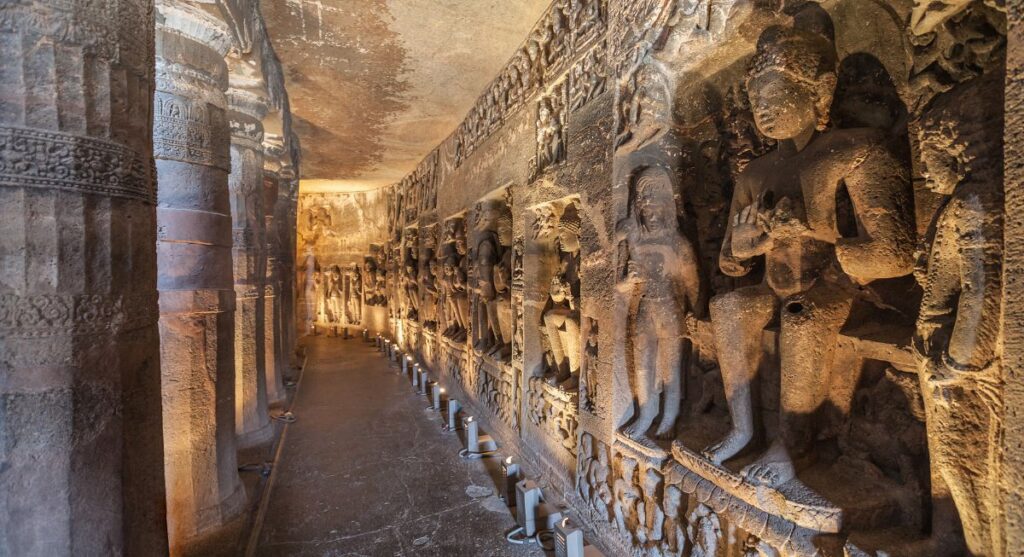
India’s tourist business includes cultural tourism, which gives travelers the opportunity to experience the nation’s diverse cultural history. Each year, millions of visitors from all over the globe come to India to see the monuments, art, music, dance, festivals, food, and way of life that highlight the country’s rich cultural variety.
The Indus Valley Civilization, which thrived more than 5000 years ago, is where India’s cultural tourism may be found. The Taj Mahal, the Khajuraho temples, Hampi, Ajanta and Ellora caves, and the Konark Sun Temple are only a handful of the country’s many well-known cultural landmarks today.
Visitors get the chance to experience and learn about the traditions, customs, and way of life of India via cultural tourism. A broad variety of cultural acts are available for viewers, including puppet shows, theatre, and performances of classical music and dance. Additionally, they are allowed to take part in traditional events like Holi, Diwali, Durga Puja, Onam, and Bihu, to mention a few.
In addition to bringing in money for the nation, cultural tourism supports the preservation and promotion of India’s rich cultural legacy. In order to boost cultural tourism, the Indian government has undertaken a number of activities, including building infrastructure around cultural places, supporting rural travel, and planning cultural events and festivals.
Cultural tourism gives local communities the chance to demonstrate their customs and crafts, fostering socioeconomic growth. It fosters entrepreneurship, stimulates the preservation of traditional skills, and opens up work prospects in the hotel and tourist industries.
The need to balance growth and preservation, safeguard cultural assets against overtourism, and guarantee that the positive effects of tourism are distributed to local people are only a few of the difficulties that come with cultural tourism.
Finally, cultural tourism is a crucial component of the Indian tourism sector since it gives tourists the opportunity to experience the nation’s rich cultural history while also producing income and advancing socioeconomic development. Visitors will have the chance to learn about and appreciate the variety of the nation, and local communities will have the chance to display their customs and handicrafts. Overall, India’s tourism industry is expanding, attracting more local and foreign tourists every year. India is well-positioned to be a top tourist destination in the years to come thanks to its various offers and attempts to encourage sustainable tourism practises.
Religious Tourism- Types of Tourism in India

Millions of tourists visit India each year due to religious tourism, which is a significant component of the country’s tourism business. Numerous religious sites, including those dedicated to Hinduism, Islam, Sikhism, Buddhism, Jainism, and Christianity, may be found throughout India. Religious travel offers a chance to connect with one’s spirituality as well as a way to learn about the nation’s varied religious traditions.
Being the most popular religion in India, Hinduism has several holy sites that draw millions of followers and visitors from across the globe. Varanasi, Haridwar, Rishikesh, Amarnath, Badrinath, Kedarnath, Vaishno Devi, and Tirupati are a few of the well-known Hindu pilgrimage destinations. Hindus regard these locations as holy because they think they are connected to numerous gods and goddesses.
With several notable religious buildings including the Jama Masjid, Ajmer Sharif Dargah, and Hazrat Nizamuddin Auliya Dargah, Islam is also widely practised in India. Muslims revere these locations, which draw followers from all over the globe.
Another significant religion in India is Sikhism, which includes a number of revered locations like the Golden Temple in Amritsar, Hemkund Sahib, and Anandpur Sahib. Millions of devotees and visitors visit these locations each year, which have enormous importance for the Sikh community.
Bodh Gaya, Sarnath, and Kushinagar are only a few of the significant sacred locations in Buddhism, which has its roots in India. Buddhists regard these locations as holy, and people from all over the globe go there to honour Lord Buddha.
Religious tourism brings in money for the nation while also giving tourists a chance to learn about the local religion. It fosters socioeconomic growth and offers local residents job options. The Indian government has taken a number of steps to encourage religious travel, including building infrastructure around holy places, publicising pilgrimage routes, and holding religious celebrations.
In conclusion, religious tourism is a significant component of India’s tourist sector since it gives travellers the chance to learn about the nation’s rich religious history and to rekindle their spirituality. It serves as a tool for advancing socioeconomic progress and safeguarding the nation’s rich cultural and religious legacy.
Adventure Tourism – Types of Tourism in India
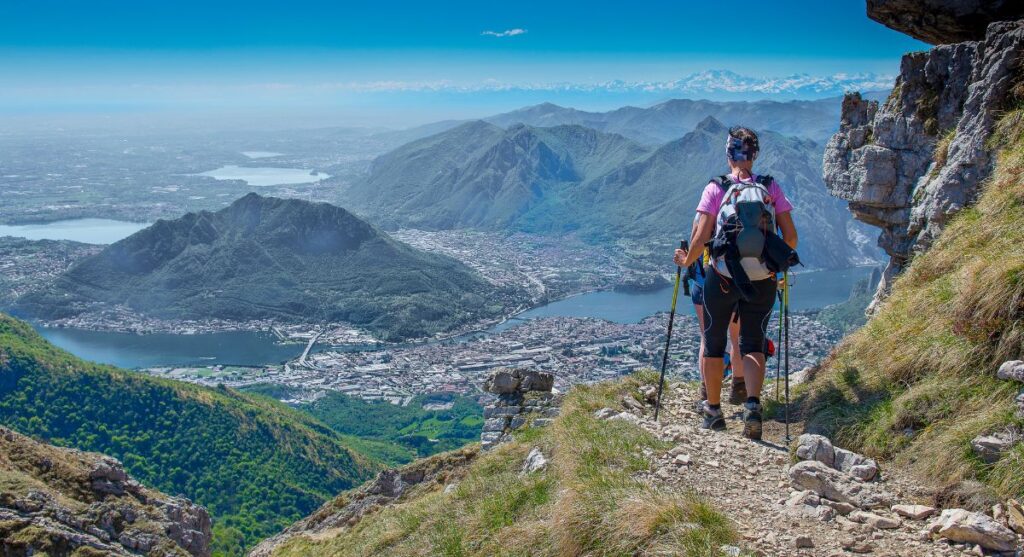
India is a land of diverse geographical features and offers ample opportunities for adventure tourism. Adventure tourism is a niche segment of tourism that involves activities that are physically challenging and require a certain level of risk-taking. India’s varied terrain ranging from the Himalayas in the north to the beaches in the south offers a plethora of adventure activities for tourists.
Trekking is one of the most popular adventure activities in India. The Himalayas in the north provide excellent trekking opportunities for adventure enthusiasts. Trekking routes like the Chadar Trek, Valley of Flowers, Roopkund, and Har ki Dun are some of the most sought after trekking destinations in India. The Western Ghats in the south are also popular for trekking, with the Sahyadri Mountains providing excellent trekking opportunities.
Mountaineering is another popular adventure activity in India. The Himalayas offer several peaks for mountaineering, including Mount Everest, the highest peak in the world. Other popular peaks for mountaineering include Kanchenjunga, Nanda Devi, and Kamet. The Western Ghats in the south also offer several peaks for mountaineering.
White water rafting is another popular adventure activity in India. The rivers in the north such as the Ganges, Indus, and Zanskar offer excellent white water rafting opportunities. The rapids in these rivers vary from easy to difficult, making it suitable for both beginners and experienced rafters. The rivers in the south such as the Cauvery and Tons also offer excellent white water rafting opportunities.
India’s diverse terrain also offers opportunities for other adventure activities such as rock climbing, paragliding, bungee jumping, and skiing. The Aravalli range in Rajasthan is popular for rock climbing, while the hills of Himachal Pradesh and Uttarakhand offer excellent opportunities for skiing. The mountains of Himachal Pradesh, Uttarakhand, and Maharashtra are popular for paragliding, while bungee jumping is popular in Rishikesh.
Adventure tourism not only provides visitors with a thrilling experience but also generates revenue for the country. It provides employment opportunities to the local population and promotes socio-economic development. The government of India has taken several initiatives to promote adventure tourism, such as developing infrastructure around adventure tourism sites, promoting adventure circuits, and organizing adventure festivals.
In conclusion, India’s diverse terrain offers ample opportunities for adventure tourism. It is a means of promoting socio-economic development and preserving the country’s rich natural heritage. Adventure tourism not only provides visitors with a thrilling experience but also generates revenue for the country.
Wildlife Tourism- Types of Tourism in India
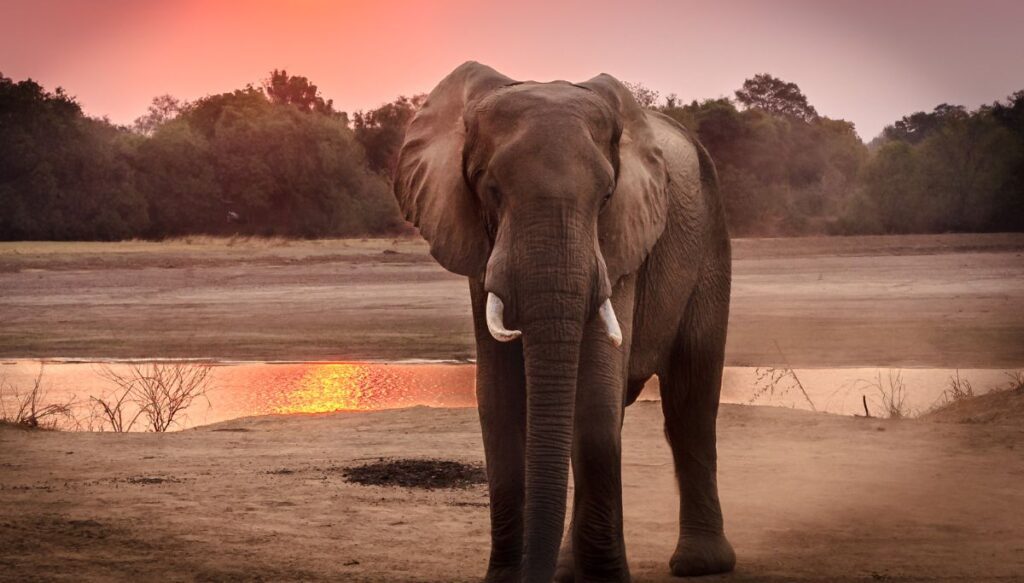
India has a thriving niche market for wildlife tourism that gives travellers a chance to see the nation’s abundant biodiversity. India is home to a wide variety of plants and animals, such as tigers, elephants, lions, leopards, rhinoceroses, and other deer and bird species. There are several chances for wildlife tourism in the nation thanks to its more than 500 wildlife sanctuaries, 100 national parks, and 18 biosphere reserves.
The Bengal tiger is India’s most well-known wildlife attraction. The Bengal tiger is regarded as India’s national animal, and there are more than 50 tiger reserves in the nation. The most well-known tiger reserves are Kanha, Bandhavgarh, and Ranthambore. The reserves provide safari tours for those who want to see these magnificent creatures in their natural environment.
The Asiatic lion is yet another well-liked wildlife tourist destination in India. The only site in the world where these lions may be found in their native environment is in Gujarat’s Gir Forest. On a jeep safari excursion through the jungle, visitors may see these majestic animals.
A number of elephant species, including the Asian elephant, may be found in India. One of the greatest sites to see these gorgeous creatures in their native environment is the Periyar Wildlife Sanctuary in Kerala. Elephants may be seen bathing and eating along the river’s banks when visitors are on a boat tour of the sanctuary.
The birdlife of India is a significant draw for wildlife tourism. The Indian Peafowl, which is India’s national bird, is one of the more than 1,200 bird species found in the nation. Birdwatchers often visit the Bharatpur Bird Sanctuary in Rajasthan, where they may see a variety of resident and migratory bird species.
Wildlife tourism not only offers tourists a unique experience but also brings in money for the nation. It fosters socioeconomic growth and offers local residents job options. The Indian government has taken a number of actions to encourage wildlife tourism, including organising wildlife festivals, encouraging eco-tourism, and building infrastructure around wildlife tourist destinations.
In conclusion, wildlife tourism in India offers travellers a unique chance to see the nation’s extensive biodiversity. It serves as a tool for fostering socioeconomic progress and safeguarding the nation’s natural heritage. Wildlife tourism not only offers tourists a unique experience but also brings in money for the nation.
Medical Tourism- Types of Tourism in India

India’s medical tourism sector is expanding as more people come to the nation to obtain surgeries or treatments at prices that are cheaper than in their native countries. India is one of the top locations for medical tourism because of its highly qualified medical staff, cutting-edge medical facilities, and reasonably priced healthcare options.
The most often requested medical services by foreign patients in India include reproductive treatments, dental work, cosmetic surgery, orthopaedic surgery, and heart surgery. India is home to a number of top-notch hospitals with cutting-edge equipment and medical services. The hospitals are staffed by highly competent physicians, nurses, and other medical specialists who have received the most recent training in medical procedures and methods.
In addition to offering reasonably priced medical treatment, India’s medical tourism industry also has a number of additional benefits. During their medical treatment, patients may undergo a vacation-like experience where they can learn about the nation’s rich culture and traditions. The Taj Mahal, the Golden Temple, and the beaches of Goa are just a few of the well-known tourist attractions in India that may be visited while recovering.
The Indian government has launched a number of programmes to encourage medical travel there. The Ministry of Health has implemented laws to protect the quality of healthcare services offered to medical tourists, while the Ministry of Tourism has created policies to simplify medical visas for foreign patients.
In India, medical tourism has boosted the economy as well as the healthcare industry. The local populace has work options, and it brings in money for the nation. Additionally, the sector has positioned India as a world leader in medical tourism and healthcare services.
In conclusion, medical tourism is a developing sector in India that offers foreign patients access to low-cost healthcare as well as a number of other benefits. The nation appeals to medical tourists because to its highly trained medical personnel, cutting-edge medical facilities, and reasonably priced healthcare services. The sector has boosted not just the healthcare business but also the economy, advancing socioeconomic advancement in the nation.
Beach Tourism -Types of Tourism in India
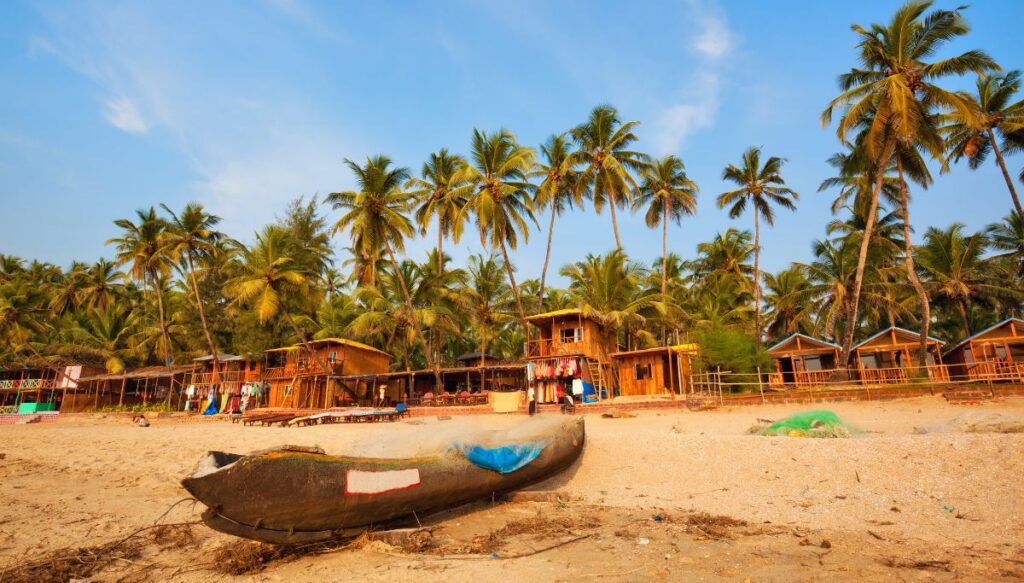
Given that India is home to a wide variety of beaches that provide natural beauty, water sports options, and leisure chances to visitors, beach tourism is one of the most well-liked types of travel there.
India has a 7,500 km long coastline, with beaches located in Goa, Kerala, Maharashtra, Tamil Nadu, Andhra Pradesh, and Odisha, among other states. These states’ beaches are renowned for their unspoiled beauty, fine sands, and pure seas.
With its palm-lined beaches, shacks, and water sports options, Goa is one of India’s most well-liked beach vacation spots. Goa is home to several well-known beaches, including as Calangute, Baga, Anjuna, and Colva. Kerala, often known as “God’s own country,” is a well-liked beach vacation spot because to its tranquil backwaters and palm-fringed beaches like Kovalam and Varkala.
The Konkan coast of Maharashtra boasts a number of undiscovered beaches that provide a calm setting, while Marina Beach in Tamil Nadu is one of the world’s longest beaches. While Odisha offers some of India’s most stunning beaches, including Puri, Gopalpur, and Chandipur, Andhra Pradesh has a number of immaculate beaches, including Ramakrishna, Manginapudi, and Uppada.
Beach tourism in India includes participating in water sports including surfing, parasailing, snorkelling, and scuba diving in addition to sunbathing and swimming in the ocean. There are facilities for these activities in several beach resorts in India, allowing visitors to enjoy the picturesque splendour of the beaches and the thrill of adventure simultaneously.
India’s beach destinations provide visitors the chance to sample the regional food and culture. Small shacks and restaurants that offer regional specialties, fish, and drinks may be found in many beach resort areas. To experience local culture and traditions, visitors may also tour the adjacent towns and villages.
To sum up, beach travel is one of the most well-liked types of vacationing in India since it combines visual beauty with adventure, relaxation, and cultural encounters. The country attracts visitors because of its extensive coastline and wide variety of beaches. By creating jobs for the local community and bringing in money for the nation, beach tourism also supports socioeconomic development in the coastal areas.
Rural Tourism- Types of Tourism in India
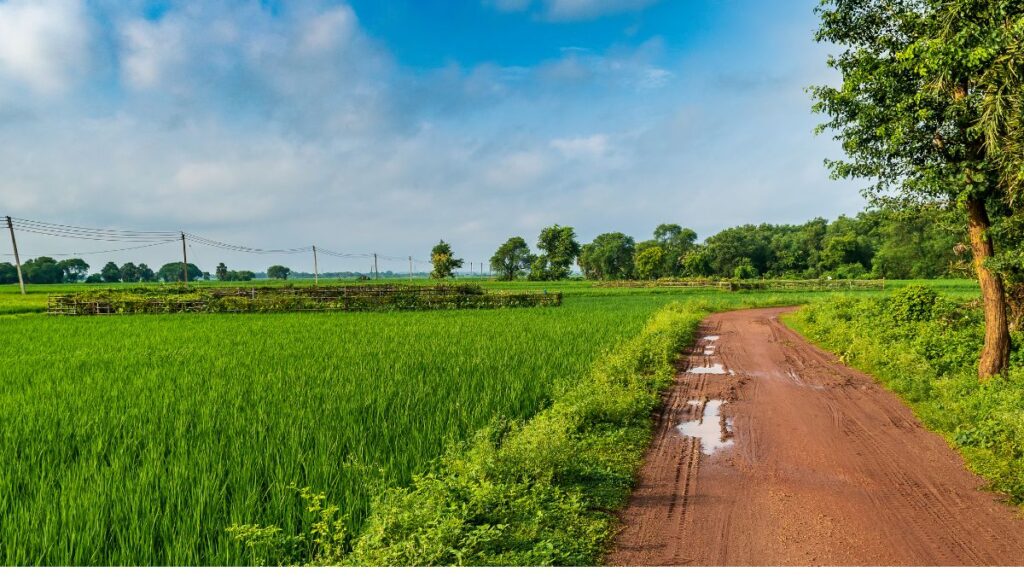
Rural tourism is a type of tourism that involves visiting rural areas to experience and learn about the local culture, traditions, and way of life. Rural tourism in India is gaining popularity as more tourists are seeking authentic and offbeat experiences.
India’s rural areas are rich in culture, history, and natural beauty. Many of these areas have unique customs, handicrafts, and cuisine that are not found in urban areas. Rural tourism in India offers an opportunity for tourists to experience the rustic lifestyle of the countryside and interact with the local communities.
Some of the popular rural tourism destinations in India include Rajasthan, Kerala, Madhya Pradesh, Himachal Pradesh, and Uttar Pradesh. In Rajasthan, tourists can visit traditional villages, stay in heritage properties, and experience the Rajasthani culture, cuisine, and handicrafts. In Kerala, tourists can visit spice plantations, stay in homestays, and experience the local festivals and rituals.
Madhya Pradesh is known for its wildlife and tribal culture. Tourists can visit the tribal villages, learn about their customs and traditions, and enjoy the local cuisine. Himachal Pradesh offers scenic beauty, adventure, and cultural experiences. Tourists can visit remote villages, enjoy trekking, and participate in local festivals.
Uttar Pradesh is home to several rural tourism destinations, such as Ayodhya, Varanasi, and Mathura. These destinations offer an opportunity to experience the ancient Indian culture and traditions, visit temples and ashrams, and participate in local festivals.
Rural tourism in India also promotes sustainable tourism practices by supporting the local communities and their livelihoods. Many of the rural tourism initiatives in India are community-based, which means that the local communities are involved in the planning, implementation, and management of tourism activities. This helps to preserve the local culture and traditions and promotes socio-economic development in the rural areas.
In conclusion, rural tourism in India offers an opportunity to experience the local culture, traditions, and way of life. It also promotes sustainable tourism practices and supports the local communities. Rural tourism in India is a growing industry, and the government and tourism industry are taking initiatives to promote and develop rural tourism in the country.
Related Posts
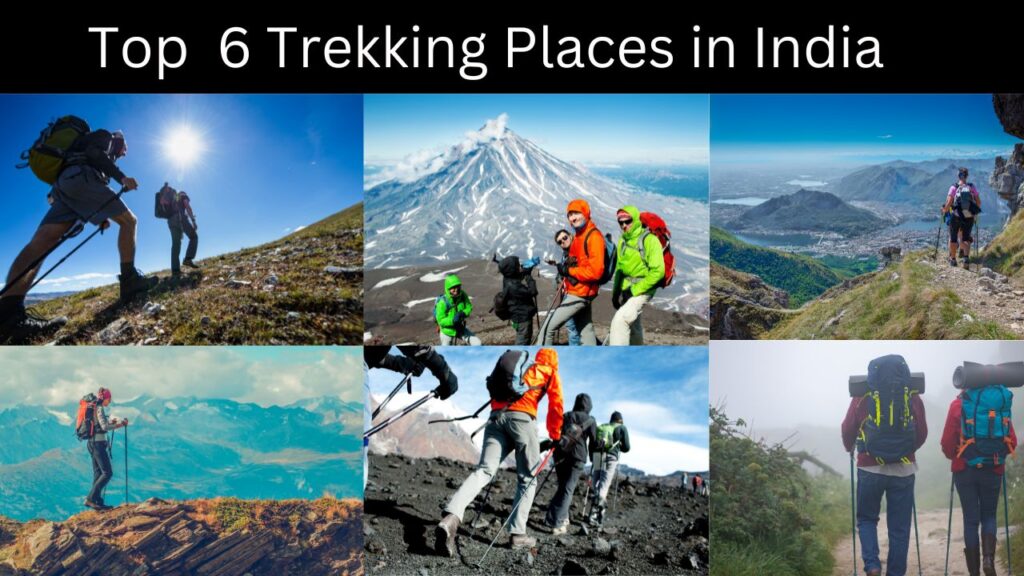
Top 6 Trekking Places in India| Best Mountains places for trekking in India
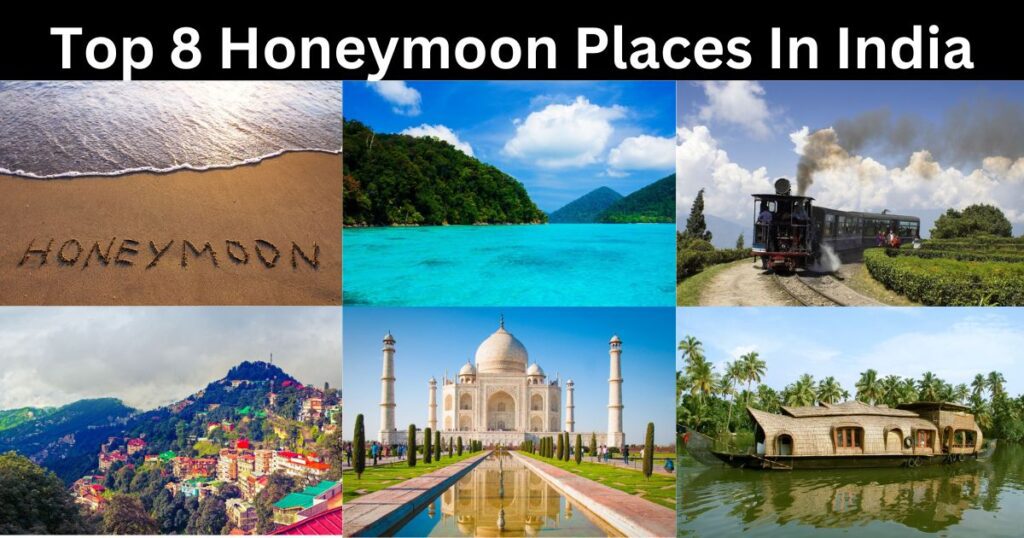
Top 8 Honeymoon Places in India, Unforgettable Honeymoon Destinations.
Leave a comment cancel reply.
Your email address will not be published. Required fields are marked *
Save my name, email, and website in this browser for the next time I comment.

To read this content please select one of the options below:
Please note you do not have access to teaching notes, indian tourism and the world.
Indian Tourism
ISBN : 978-1-80262-938-5 , eISBN : 978-1-80262-937-8
Publication date: 22 August 2022
In many situations, India is positioned as one of the world's most economically active countries, with richer touristic acquisitions. India dominates touristic values and development in many scenarios. India shapes and reshapes tourism in a comparatively different manner than the rest of the tourist-generating regions, riding the waves of Asian domination in tourism development. This chapter examines the transformative features of Indian tourism in terms of resources, social development, tourist mechanisms inside the country and various types of tourism industry modelling. Domestic, inbound and outbound tourism perspectives have been taken from both insiders' and outsiders' perspectives. The chapter also highlights the comparative similarities and differences between Indian tourism and some of the selected tourist-generating regions in the world.
- Indian tourism
- Tourism model
- Inbound tourism
- Outbound tourism
- Insiders' perspectives
- Outsiders' perspectives
Thomas, T.K. (2022), "Indian Tourism and the World", Chowdhary, N. , Billa, S. and Tiwari, P. (Ed.) Indian Tourism , Emerald Publishing Limited, Leeds, pp. 21-32. https://doi.org/10.1108/978-1-80262-937-820221002
Emerald Publishing Limited
Copyright © 2022 Toney K. Thomas. Published under exclusive licence by Emerald Publishing Limited
We’re listening — tell us what you think
Something didn’t work….
Report bugs here
All feedback is valuable
Please share your general feedback
Join us on our journey
Platform update page.
Visit emeraldpublishing.com/platformupdate to discover the latest news and updates
Questions & More Information
Answers to the most commonly asked questions here

Tourism Resources of India
Page Visits
Course layout.
Week – 1 | 1. Indian Tourism- General Introduction | 2.Understanding Tourism Products Part I | 3.Understanding Tourism Products Part II |
Week – 2 | 4. Managing Tourism Products Part I | 5.Managing Tourism Products Part II | 6.Tourism Products of India part I |
Week – 3 | 7. Tourism Products of India part II | 8.Tourism Products of India Part III | 9.Tourism Products of India Part IV |
Week – 4 | 10.Cultural Tourism in India | 11. Fairs and Festivals of India | 12. Indian Classical Dances | 13.Indian Folk Dances and Music traditions | 14. Fairs & festival in India-Part II |
Week – 5 | 15. Indian Paintings | 16. Handicrafts of India | 17. Museums in India | 18. Architectural Heritage of India |
Week – 6 | 19. Impact of Cultural Tourism | 20. Heritage & Pilgrim Destinations of North India | 21. Spiritual and Heritage destinations of South India | 22. Spiritual and Heritage Tourism in West and Central India |
Week - 7 | 23. Important Tourist destinations of East India | 24. Basic Properties of Ecology | 25. Tourism and Ecology Linkage |26. Global Concern |
Week – 8 | 27. Nature based destinations of North India | 28. Hill stations and wildlife tourism in South India | 29. Hill stations , Beaches & wildlife tourism in West and Central India |
Week – 9 | 30.Wild Life & Beach Tourism in Eastern India | 31. Conservation of Ecology | 32. Natural & Other Tourism Resources | 33. Eco-Tourism Development |
Week – 10 | 34. Business of Ecotourism | 35. Tourism & Environmental Impact Assessment (EIA) | 36. Ecological Planning | 37. Tourism and Sustainable Development |
Week – 11 | 38. Tourism Destination Carrying capacity (HUMAN POPULATIONS) | 39. Indian Tourism Policy, Luxury Trains | 40. International Tourism Products Part – I | 41. International Tourism Products Part – II |
Books and references
Instructor bio.

Prof. H. Rajashekar
Course certificate.

DOWNLOAD APP

SWAYAM SUPPORT
Please choose the SWAYAM National Coordinator for support. * :

Hand-Picked Top-Read Stories

Vision Zero: A Comprehensive Guide
- Environment
- Transportation

Advantages of Public Transport: 20 Reasons to Make the Shift Today
- Planet earth

CNG Fuel: A Comprehensive Guide
Trending tags.
- Zoning Laws
- Zero-waste living
- zero-waste kitchen
- workplace safety
- workplace charging
- WineTasting
- Sustainable Tourism
20 Sustainable Tourism Practices and Destinations in India to Visit Now
Sustainable Tourism in India: India is a country of diverse landscapes, cultures, and traditions, making it a popular destination for travelers from all over the world. With its rich cultural heritage, stunning natural beauty, and bustling cities, India has much to offer to travelers seeking unique experiences. However, with the growth of tourism, the country has also witnessed an increase in environmental and social issues, such as waste management, carbon emissions, and exploitation of local communities. To address these concerns, sustainable tourism practices and initiatives have been developed across the country to promote responsible tourism. In this article, we will highlight 20 sustainable tourism practices and destinations in India that travelers can visit to support sustainable tourism.
20 Sustainable Tourism Practices and Destinations in India
- Spiti Valley, Himachal Pradesh : Nestled in the Himalayas, Spiti Valley is a remote and pristine destination that offers travelers a chance to experience the unique culture and traditions of the Spiti people. The valley is home to several eco-tourism initiatives, such as the Spiti Ecosphere, which supports the conservation of the region’s natural resources, and provides economic opportunities for local communities.
- Chilika Lake, Odisha : Chilika Lake is the largest saltwater lake in Asia and home to a variety of bird species and aquatic life. The lake is a popular destination for bird watching and eco-tourism, with several sustainable tourism initiatives aimed at promoting the conservation of the lake’s ecology and supporting the livelihoods of local communities.
- Kabini, Karnataka : Kabini is a wildlife sanctuary located in the southern Indian state of Karnataka. The sanctuary is home to a variety of wildlife species, including elephants, tigers, and leopards. The region has several eco-friendly resorts that promote responsible tourism practices, such as the Kabini River Lodge, which supports conservation efforts and provides economic benefits to local communities.
- Sikkim : Sikkim is a small state in northeastern India that is known for its stunning natural beauty and cultural heritage. The region has several sustainable tourism initiatives aimed at promoting eco-friendly practices and supporting local communities. For instance, the state has banned the use of plastic bags and promotes the use of eco-friendly products.
- Andaman and Nicobar Islands : The Andaman and Nicobar Islands are a group of islands located in the Bay of Bengal. The islands are home to several unique wildlife species and pristine beaches. The islands have several eco-tourism initiatives aimed at promoting responsible tourism practices, such as the Mahatma Gandhi Marine National Park, which supports the conservation of the region’s marine ecology.
- Ladakh, Jammu and Kashmir : Ladakh is a high-altitude desert region located in the northernmost part of India. The region is known for its unique culture and stunning natural beauty, such as the Pangong Lake, which is a popular destination for eco-tourism. The region has several sustainable tourism initiatives aimed at promoting responsible tourism practices, such as the Ladakh Ecological Development Group, which supports the conservation of the region’s natural resources and provides economic benefits to local communities.
- Mawphlang, Meghalaya : Mawphlang is a small village located in the northeastern Indian state of Meghalaya. The village is home to a sacred forest that is protected by local communities. The forest is a popular destination for eco-tourism, with several sustainable tourism initiatives aimed at promoting responsible tourism practices, such as the Mawphlang Sacred Forest Conservation Project.
- Wayanad, Kerala : Wayanad is a district located in the southern Indian state of Kerala that is known for its stunning natural beauty and biodiversity. The region has several eco-friendly resorts that promote responsible tourism practices and support local communities,
- Sunderbans, West Bengal : Sunderbans is a UNESCO World Heritage Site located in the Indian state of West Bengal. The region is known for its unique mangrove forests and wildlife species, such as the Royal Bengal Tiger. The region has several sustainable tourism initiatives aimed at promoting responsible tourism practices and supporting the conservation of the region’s natural resources, such as the Sunderban Tiger Trail, which offers travelers a chance to experience the unique wildlife and culture of the region.
- Coorg, Karnataka : Coorg is a popular hill station located in the southern Indian state of Karnataka. The region is known for its stunning natural beauty and coffee plantations. The region has several eco-friendly resorts that promote responsible tourism practices and support the conservation of the region’s natural resources, such as the Eco Habitat Resort, which provides economic opportunities for local communities and supports conservation efforts.
- Hampi, Karnataka : Hampi is a UNESCO World Heritage Site located in the southern Indian state of Karnataka. The region is known for its stunning ruins and unique cultural heritage. The region has several sustainable tourism initiatives aimed at promoting responsible tourism practices and supporting the conservation of the region’s cultural and natural resources, such as the Hampi World Heritage Area Management Authority.
- Maheshwar, Madhya Pradesh : Maheshwar is a small town located in the Indian state of Madhya Pradesh that is known for its stunning textiles and cultural heritage. The region has several sustainable tourism initiatives aimed at promoting responsible tourism practices and supporting the conservation of the region’s cultural and natural resources, such as the Rehwa Society, which supports the preservation of the region’s traditional textile practices and provides economic opportunities for local communities.
- Khonoma, Nagaland : Khonoma is a small village located in the northeastern Indian state of Nagaland that is known for its stunning natural beauty and unique cultural heritage. The village has several sustainable tourism initiatives aimed at promoting responsible tourism practices and supporting the conservation of the region’s natural and cultural resources, such as the Khonoma Nature Conservation and Tragopan Sanctuary.
- Khajuraho, Madhya Pradesh : Khajuraho is a UNESCO World Heritage Site located in the Indian state of Madhya Pradesh that is known for its stunning temple architecture and unique cultural heritage. The region has several sustainable tourism initiatives aimed at promoting responsible tourism practices and supporting the conservation of the region’s cultural and natural resources, such as the Khajuraho Management Authority.
- Coonoor, Tamil Nadu : Coonoor is a popular hill station located in the southern Indian state of Tamil Nadu. The region is known for its stunning natural beauty and tea plantations. The region has several eco-friendly resorts that promote responsible tourism practices and support the conservation of the region’s natural resources, such as the Tea Nest.
- Manas National Park, Assam : Manas National Park is a UNESCO World Heritage Site located in the northeastern Indian state of Assam. The region is known for its unique biodiversity and wildlife species, such as the Indian one-horned rhinoceros. The region has several sustainable tourism initiatives aimed at promoting responsible tourism practices and supporting the conservation of the region’s natural resources, such as the Manas Jungle Camp.
- Kutch, Gujarat : Kutch is a region located in the Indian state of Gujarat that is known for its stunning natural beauty and unique cultural heritage. The region has several sustainable tourism initiatives aimed at promoting responsible tourism practices and supporting the conservation of the region’s cultural and natural resources, such as the Kutch Adventures India.
- Araku Valley, Andhra Pradesh : Araku Valley is a popular hill station located in the southern Indian state of Andhra Pradesh. The region is known for its stunning natural beauty and coffee plantations. The region has several sustainable tourism initiatives aimed at promoting responsible tourism practices and supporting the conservation of the region’s natural resources, such as the Araku Tribal Museum and Coffee House, which promotes the region’s unique tribal culture and provides economic opportunities for local communities.
- Spiti Valley, Himachal Pradesh : Spiti Valley is a region located in the northern Indian state of Himachal Pradesh that is known for its stunning natural beauty and unique cultural heritage. The region has several sustainable tourism initiatives aimed at promoting responsible tourism practices and supporting the conservation of the region’s cultural and natural resources, such as the Spiti Ecosphere, which promotes sustainable tourism practices and supports the conservation of the region’s natural resources.
- Panna National Park, Madhya Pradesh : Panna National Park is a region located in the Indian state of Madhya Pradesh that is known for its unique biodiversity and wildlife species, such as the Bengal tiger. The region has several sustainable tourism initiatives aimed at promoting responsible tourism practices and supporting the conservation of the region’s natural resources, such as the Ken River Lodge, which promotes eco-tourism and supports the conservation of the region’s natural resources.
In recent years, sustainable tourism has gained significant momentum in India, with the government, private sector, and local communities all taking steps to promote responsible tourism practices and support the conservation of the country’s natural and cultural heritage.
One of the key challenges faced by sustainable tourism initiatives in India is the lack of awareness and understanding of sustainable tourism practices among tourists, as well as among local communities and stakeholders. As a result, there is a need for more education and awareness programs aimed at promoting sustainable tourism practices and raising awareness about the benefits of responsible tourism.
Another challenge is the need to balance the demands of tourism with the need to protect the environment and support local communities. This requires the implementation of policies and programs that promote sustainable tourism practices while also supporting the economic development of local communities.
Despite these challenges, there are many examples of sustainable tourism practices and destinations in India that demonstrate the potential of sustainable tourism to support economic development, promote cultural exchange, and conserve natural and cultural resources.
One of the most promising areas of sustainable tourism in India is community-based tourism, which involves the development of tourism activities and services that are owned and operated by local communities. This approach not only provides economic opportunities for local communities but also promotes the conservation of natural and cultural resources, as local communities are often the custodians of these resources.
Another promising area of sustainable tourism in India is ecotourism, which involves the development of tourism activities and services that focus on the conservation of natural resources and the protection of the environment. This approach not only supports the conservation of natural resources but also provides tourists with a unique and memorable travel experience that is focused on the natural beauty and ecological diversity of the region.
In addition to community-based tourism and ecotourism, there are many other sustainable tourism practices and destinations in India that promote responsible tourism practices and support the conservation of natural and cultural resources. These include sustainable resorts and hotels, sustainable transportation options, and cultural and heritage tourism initiatives.
Overall, sustainable tourism is an important and promising area of tourism in India that has the potential to support economic development, promote cultural exchange, and conserve natural and cultural resources. By supporting sustainable tourism practices and initiatives in India, travelers can not only have a memorable travel experience but also contribute to the conservation and sustainable development of the country’s natural and cultural heritage.
Similar Articles
Sustainable Tourism Practices and Destinations: Examples from Around the World
- 20 Tips for Being a Green Traveler: How to Reduce Your Carbon Footprint While Traveling
- Traditional Practices that Tourists Should Never Support
- Sustainable Tourism in India
Leave a Reply Cancel reply
Your email address will not be published. Required fields are marked *
Save my name, email, and website in this browser for the next time I comment.
Previous Post

Spiti Valley: A Model of Sustainable Tourism Practices
Related posts.

- Climate Crisis
- Cultural Tourism
- Natural Disasters
Understanding the Sociocultural Impacts of Tourism Pressure and How to Address Them

- Wildlife Tourism
Kabini: Preserving Natural Beauty and Supporting Local Communities

Useful Links
- Water Resources
- About Me and This Site
10 Important Types of Tourism in India
The tourism industry is has emerged as one of the fastest-growing industries in the world and economically important for rapid growth for India. There are various types of tourism branches in Incredible India, The Ministry of Tourism has identified 10 niche products for development, promotion, to attract tourists with specific interest and India as a 365 Days tourist destination.
1. Cruise Tourism
Cruises are one of the most dynamic and fastest-growing components of the leisure industry in India. Cruises tourism is the new marketable product for India to explore the beautiful coastline, undisturbed idyllic islands, and virgin forests.
The coastline and inland waterways of India has the potential to develop cruise or boathouse tourism. The 8 tourist Cruise circuits in India will include Ocean Cruise, River Cruise, and Lake Cruise.
2. Adventure Tourism Adventure tourism includes mountaineering, trekking, hand gliding, paragliding, bungee jumping, and white water river rafting. The Ministry of Tourism has identified a list of places in India for thrilling and extreme adventure sports, mostly in Gulmarg, Jammu & Kashmir, Rishikesh Uttarakhand, Goa, and Maharashtra.
3. Medical Tourism Medical Tourism or medical travel is used for the procedures of complex specialized surgeries of the human parts such as joint replacement cardiac surgery, dental surgery, and cosmetic surgeries.
4. Wellness Tourism
Wellness Tourism includes travel for a less stressful lifestyle, promoting a healthier, and finding balance in one’s life. Ayurveda, Yoga, meditation, Panchakarma, Rejuvenation Therapy are among the most ancient systems of medical treatment in India and the best way to promote Wellness Tourism.
5. Golf Tourism
India has several golf courses of international standards and as the sports tourism in India is gaining interest, Ministry of Tourism is creating a comprehensive and coordinated framework for promoting golf tourism in India.
6. Polo Tourism
The game of Polo is originated in India and still preserved and practiced in Kolkata Polo Club, the oldest Polo club in the world. Polo can be listed as Heritage Sports of India.
7. Eco-Tourism
Eco-Tourism also is known as ecological tourism is responsible for travel to fragile, pristine and usually protected areas. It will include regulated tourism in protected areas of the country.
8. Film Tourism
In an endeavor to establish India as a filming destination, the Ministry of Tourism will promote the Cinema of India as a sub-brand of Incredible India. International Film Festivals like IFFI Goa, European Film Market, Cannes Film festival will be held in India in the future.
9. Sustainable Tourism Sustainable Tourism includes approval and classification of hotels to the expected standards for different classes of tourists. This system will rate hotels from one star to five star and Heritage and Classic etc.
10. Meetings Incentives Conferences Exhibitions (MICE) Conventions and Conferences are segments of the tourism industry. IIn order to promote India more effectively as a convention destination for the travel industry, the Ministry of Tourism set up the India Convention Promotion Bureau.
WllkThroughIndia
Share this:
About Rashid Faridi
Leave a comment cancel reply.
This site uses Akismet to reduce spam. Learn how your comment data is processed .
Total Visitors
Search inside, my you tube channel.
Jugraphia With Rashid Faridi
Visitors on The Site
Subscribe by Email
Enter your email address to subscribe to this Blog.
Email Address:
Click Here to Subscribe
Fill This Form to Contact Me
Top posts & pages.
- Social Geography: Concept,Origin,Nature and Scope
- First Urbanization In India: Indus Valley Civilization
- Peopling Process of India: Technology and Occupational Change
- Migration Theories : Lee’s Push Pull Theory
- The Structure of the Ocean Floor(Ocean Topography)
- Classification of Social Groups
- Characteristics of Rural Settlements
- Physical Divisions of North America: An Overview
- Types of Tourism : An Overview
- Nature and Scope of Urban Geography: An Overview
Being Social
- View rashidazizfaridi’s profile on Facebook
- View rashidfaridi’s profile on Twitter
- View rashidfaridi’s profile on Instagram
- View rashidafaridi’s profile on Pinterest
- View rashidazizfaridi’s profile on LinkedIn
- A load of crap from an idle brain
- Akhil Tandulwadikar’s Blog
- Anast's World
- Earth in Danger
- Install Flipkart on your Mobile
- Onionesque Reality
- WordPress.com
- WordPress.org
Digital Blackboards
- Geomorphology Class Blackboard
- My Page at AMU
Other Sites I Am Involved With
- Bytes From All Over The Globe
- Jugraphia Slate
- Rakhshanda's Blog
Recommended Links
- Dr. Shonil Bhagwat's Blog
- Top Educational Sites
- Trainwreck of Thoughts
- Views of The World
- Access and Download NCERT Books Free
- My Uncle Fazlur Rehman Faridi on Wikipedia
Treasure Hunt
- Buy Certificate Physical and Human Geography
- Buy BHARAT KA BHUGOL 4th Edition from Flipkart.com
- Buy BHUGOLIK CHINTAN KA VIKAS
- INDIA A COMPREHENSIVE GEOGRAPHY by KHULLAR D.R.
Tourism Geography
- Entries feed
- Comments feed
- Already have a WordPress.com account? Log in now.
- Subscribe Subscribed
- Copy shortlink
- Report this content
- View post in Reader
- Manage subscriptions
- Collapse this bar
River Tourism in India: Its Role and Significance
- First Online: 06 November 2022
Cite this chapter

- Sanjukta Sattar 7
231 Accesses
Tourism and river are intricately linked in terms of source of attraction and unique experience. Rivers are found to be major tourism resource offering spectacular settings, recreational opportunities, waterfront landscapes. Various activities like river cruises, water sports like sailing and rafting and the riverbank landscape contributes to the immense potential of river tourism and its role in the development of places along its banks. The local culture and heritage generally being connected with the river makes various places along the river, destination of cultural tourism also. In India, which is the land of many rivers, river tourism holds much potential as a form of sustainable tourism. The places get identified by the river flowing by it, the beautiful natural setting and the various river-based activities attracting tourists, thus branding those places as river tourism destinations. Promotion of river tourism can help in preservation of natural environment and cultural heritage of the region as well as add to the employment opportunities of the local population.
In this context, this paper will attempt to explore the development of river tourism in India and its various contributions in terms of conservation of the river and its surrounding environment as well as creating opportunities for sustainable livelihood of the river-based community. The paper will begin with an introduction to river tourism through a discussion on the relationship between river and tourism, roles of river tourism and the various activities related river tourism. In the following section an overview will be presented about the various river tourism destinations in India. Based on some of the popular river tourism destinations in India, in the third section of the paper an attempt will be made to understand the symbiotic relation between river and tourism by exploring the nature of tourism related activities centered on the river and the riverfront. The paper will end by drawing conclusions about the role and significance of river-based tourism development especially as an endeavour towards the achievement of sustainable development goals.
This is a preview of subscription content, log in via an institution to check access.
Access this chapter
- Available as PDF
- Read on any device
- Instant download
- Own it forever
- Available as EPUB and PDF
- Compact, lightweight edition
- Dispatched in 3 to 5 business days
- Free shipping worldwide - see info
- Durable hardcover edition
Tax calculation will be finalised at checkout
Purchases are for personal use only
Institutional subscriptions
Cooper, M. (2009). River tourism in the South Asian subcontinent. In B. Prideaux & M. Cooper, River tourism (pp. 23–40). CABI.
Google Scholar
CUTS International. (2019). Promoting trade and tourism in transboundary waterways of Meghna Basin . https://cuts-citee.org/pdf/promoting-trade-and-tourism-in-transboundary-waterways-of-meghna-basin.pdf
CUTS International. (2021). Reviving riverine livelihoods through short haul trade and tourism (Policy Brief). Cuts-citee.org. https://cuts-citee.org/pdf/reviving-riverine-livelihoods-through-short-haul-trade-and-tourism.pdf .
Forts in India. (n.d.). Famous places in India . Retrieved 13 February 2022, from http://www.famousplacesinindia.in/Forts/ .
Fernandes, G., de Castro, E., & Gomes, H. (2020). Water resources and tourism development in estrela geopark territory: Meaning and contributions of fluvial beaches to valorise the destination. European Countryside, 12 (4), 551–567. https://doi.org/10.2478/euco-2020-0029
FICCI. (2019). Indian tourism infrastructure: Investment opportunities & challenges (pp. 1–80). https://ficci.in/spdocument/23099/FICCI-report-TIM-2019.pdf
Gandikota Fort - Grand Canyon of India (n.d.). Famous places in India . Retrieved 13 February 2022, from http://www.famousplacesinindia.in/Forts/Gandikota-Fort.aspx .
Incredible India | Rivers. (n.d.) Incredibleindia.org. Retrieved 13 February 2022, from https://www.incredibleindia.org/content/incredible-india-v2/en/experiences/nature-and-wildlife/rivers.html .
Kapoor, S. (2015). 14 Picturesque river side vacation destinations in India . TripHobo. Retrieved 13 February 2022, from https://www.triphobo.com/blog/picturesque-river-side-destinations-in-india .
Kerala to Develop River-Based Tourism. (2021). Times of India . Retrieved 13 February 2022, from https://timesofindia.indiatimes.com/travel/travel-news/kerala-to-develop-river-based-tourism/as85481867.cms .
Prideaux, B., Timothy, D.J., and Cooper, M. (2009). Introducing river tourism: Physical, ecological and human aspects. In B. Prideaux & M. Cooper, River tourism (pp. 1–22). CABI.
Shakiry, A.S. (2007) River tourism: Can Iraq benefit from Europe's experience? Islamic tourism prospects, Islamic Tourism, Issue 8.
Srinivas, H. (2016). Communities along rivers: Importance of community networking to preserve local rivers . Gdrc.org. Retrieved 13 February 2022, from https://www.gdrc.org/oceans/river-mgmt.html .
Stanford, J., Alexander, L., & Whited, D. (2017). Riverscapes. In F. Richard Hauer & G. Lamberti, Methods in stream ecology (3rd ed., pp. 3–19). Academic Press. In River Ecosystem—an Overview, Science Direct topics. Retrieved 13 February 2022, from https://www.sciencedirect.com/topics/earth-and-planetary-sciences/river-ecosystem .
Tekin, O. (2017). Development and sustainability of river tourism in Turkey: The case of Antalya. In M. Gorenak & A. Trdina, Tourism and development 2017: Active & sports tourism: Feel the freedom of the water (1st ed., pp. 63–67). Maribor Press. Retrieved 13 February 2022, from.
Times of India (2021). Kerala to develop river-based tourism. Times travel. August 20, 2021. https://timesofindia.indiatimes.com/travel/travel-news/kerala-to-develop-river-based-tourism/as85481867.cms
Top Places Near Rivers and Lakes in India (2022). Best lakes and riverside places in India . Holidify.com. Retrieved 13 February 2022, from https://www.holidify.com/collections/lake-riverside-places-in-india .
Spiti Travel and Tourism Guide . (n.d.). India.com. Retrieved 13 February 2022, from https://www.india.com/travel/spiti/ .
van Balen, M., Dooms, M., & Haezendonck, E. (2014). River tourism development: The case of the port of Brussels. Research in Transportation Business & Management, 13 , 71–79. https://doi.org/10.1016/j.rtbm.2014.10.014
Article Google Scholar
World Tourism Organization (2016). Mekong river-based tourism product and development . UNWTO.
Download references
Author information
Authors and affiliations.
Department of Geography, University of Mumbai, Mumbai, Maharashtra, India
Sanjukta Sattar
You can also search for this author in PubMed Google Scholar
Corresponding author
Correspondence to Sanjukta Sattar .
Editor information
Editors and affiliations.
Department of Geography, Aliah University, Kolkata, India
Aznarul Islam
Department of Geography, Victoria Institution (College), Kolkata, India
Prakriti Das
Department of Geography, Chandrapur College, Bardhaman, West Bengal, India
Sandipan Ghosh
Department of Geography, Ranaghat College, Nadia, West Bengal, India
Abarna Mukhopadhyay
Post-Graduate Department of Geography, Chandernagore College, Chandannagar, West Bengal, India
Ayan Das Gupta
Shree Ranjani Housing Society, Foundation of Practising Geographers, Kolkata, India
Arun Kumar Singh
Rights and permissions
Reprints and permissions
Copyright information
© 2022 The Author(s), under exclusive license to Springer Nature Switzerland AG
About this chapter
Sattar, S. (2022). River Tourism in India: Its Role and Significance. In: Islam, A., Das, P., Ghosh, S., Mukhopadhyay, A., Das Gupta, A., Kumar Singh, A. (eds) Fluvial Systems in the Anthropocene. Springer, Cham. https://doi.org/10.1007/978-3-031-11181-5_25
Download citation
DOI : https://doi.org/10.1007/978-3-031-11181-5_25
Published : 06 November 2022
Publisher Name : Springer, Cham
Print ISBN : 978-3-031-11180-8
Online ISBN : 978-3-031-11181-5
eBook Packages : Earth and Environmental Science Earth and Environmental Science (R0)
Share this chapter
Anyone you share the following link with will be able to read this content:
Sorry, a shareable link is not currently available for this article.
Provided by the Springer Nature SharedIt content-sharing initiative
- Publish with us
Policies and ethics
- Find a journal
- Track your research

COMMENTS
Types of Tourism Resources in India. Over the years, India has become a major tourist destination. India has grown with a tremendous flow of tourists globally. There are many types of tourism resources available in India, such as natural resources, adventure, human culture, pilgrimage, wildlife, etc. Here, we talk about three types of tourism ...
Geography of India. India is a country located in South Asia and is the seventh-largest country in the world by land area. It has a diverse landscape and a wide range of climates, ranging from tropical in the south to alpine in the north. India is bordered by the Indian Ocean to the south, the Bay of Bengal to the east, and the Arabian Sea to the west. It shares land borders with Pakistan to ...
Explore the myriad Types of Tourism In India From 1. Adventure, 2. Cultural , 3. Ecotourism, 4. Wellness, 5. Rural To 6. Business Tourism.
Last on the list of the types of tourism in India is Spiritual tourism, which occupies a vital place in Indian tourism. India is known as the birthplace of several Hindu gods, including Ram, Krishna, and Hanuman, and places like Rishikesh, Haridwar, Ayodhya, and Varanasi are holy places to worship them. These are India's biggest spiritual ...
Tourism in India is fairly rich and diverse in terms of its attractions and resources though the body of knowledge of tourism as a discipline is relatively unexplored in terms of scholarly research. In this special issue, an effort has been made to divulge a deeper understanding of vivid perspectives of tourism in India using an ...
India has a wide variety of travel options, including wildlife tourism, adventure tourism, medical tourism, and cultural tourism. Visitors from all over the globe come to India to see its various landscapes, rich cultural history, and countless attractions. The Taj Mahal in Agra, Goa's beaches, Kerala's backwaters, and the Himalayan area ...
The many different types of tourism in India - spiritual, adventure, Yoga, sightseeing, beach-going and wildlife-watching among them -reflect the nation's incredible diversity and great wealth ...
Tourism in India is 4.6% of the country's gross domestic product (GDP). Unlike other sectors, tourism is not a priority sector for the Government of India. Forbes magazine ranked India as the 7th most beautiful country in 'The 50 Most Beautiful Countries In The World' rankings. The World Travel and Tourism Council calculated that tourism generated ₹ 13.2 lakh crore (US$170 billion) or 5.8% ...
It is expected that medical tourism in India will hold a value around US$ 2 billion by 2012. The city of Chennai attracts around 45% of medical tourists from foreign countries. Pilgrimage tourism India is famous for its temples and that is the reason that among the different kinds of tourism in India, pilgrimage tourism is increasing most rapidly.
The special issue, therefore, includes both con-ceptual and empirical papers re flecting innovative and current approaches to ensure the in-depth scrutiny of tourism in India. The articles accepted for inclusion in this special issue are contributed by various researchers and scholars working on the diverse arena of tourism with a speci fic ...
India shapes and reshapes tourism in a comparatively different manner than the rest of the tourist-generating regions, riding the waves of Asian domination in tourism development. This chapter examines the transformative features of Indian tourism in terms of resources, social development, tourist mechanisms inside the country and various types ...
Tourism resources of India. 150. Tourism Products of India: A National Perspective. Robinet Jacob, P.Mahadevan, Sindhu Joseph (2012) Text Book. A fresh perspective on the various tourism resources of India. 327. Tourism: operations and Management. SunetraRoday (2009) Text Book. Various types of tourism, tourism infrastructure and sustainable ...
1.1 Tourism Products 4 1.2 Tourism Resources of India 11 1.3 Climate, Vegetation and Culture 26 II 2.1 Natural Resources for Tourism 38 2.2 Hill Stations and other Natural Resources 56 2.3 Caves of India 66 III 3.1 Tourism Circuits & Pilgrimage 78 3.2 Heritage Tourism cuircuits 96 3.3 Heritage Circuits of India 102 IV 4.1 Manmade Resources for ...
20 Sustainable Tourism Practices and Destinations in India. Spiti Valley, Himachal Pradesh: Nestled in the Himalayas, Spiti Valley is a remote and pristine destination that offers travelers a chance to experience the unique culture and traditions of the Spiti people. The valley is home to several eco-tourism initiatives, such as the Spiti ...
Title. Encyclopaedia of Tourism Resources in India, Volume 2Encyclopaedia of Tourism Resources in India, Manohar Sajnani, ISBN8178350149, 9788178350141. Author.
2. Adventure Tourism. Adventure tourism includes mountaineering, trekking, hand gliding, paragliding, bungee jumping, and white water river rafting. The Ministry of Tourism has identified a list of places in India for thrilling and extreme adventure sports, mostly in Gulmarg, Jammu & Kashmir, Rishikesh Uttarakhand, Goa, and Maharashtra. 3.
The impact of tourism on the Indian economy. Travel and tourism accounts for about 5% of GDP in India, generating 39 million jobs as of 2020. By 2029, the WTTC predicts that India will be among the top 10 countries in the world with the largest GDP from tourism. Ashley at the Taj Mahal by Ashley Blake.
Rivers and tourism shares a close bonding. Both are intricately linked as a source of attraction and unique experience. "Rivers provide solitude, beauty and interesting history that appeal to local recreationists and tourists" (World Tourism Organisation, 2016).Rivers are found to be a major tourism resource offering spectacular settings, recreational opportunities, waterfront landscapes ...
Cultural resources in India: India's rich heritage archaeological sites ancient monuments and diverse, monuments and architecture, Fairs and Festivals in India cultural and artistic heritage ... Resources and Tourism: Tourism resources: types-attractions-definition-concept-importancecharacteristics-natural and man-made attractions- Physical ...
Tamil Nadu is renowned for cultural tourism in India as well because it exhibits Dravidian customs and culture. Its numerous temples reflect India's rich cultural heritage. Numerous tourist attractions in Uttar Pradesh attest to the nation's rich cultural heritage. The Taj Mahal in Agra is the most well-known structure.
Tourism Resources of India ETS-102 1 UNIT-1 TOURISM-CONCEPT & PERSPECTIVES STRUCTURE: 1.0 Introduction 1.1 Objectives 1.2 Changing Facets of Tourism 1.3 Different ... estimated that migrations of this type took about 15,000 years, but this is a brief span of time in the long history of humanity. Various theories have been proposed
Cultural tourism is a major segment of India's tourism industry, accounting for over 70% of all tourist arrivals. India is home to a rich and diverse culture, with a wide range of historical ...
Among the types of tourism in India, ecotourism have grown recently. Ecotourism entails the sustainable preservation of a naturally endowed area or region. This is becoming more and more significant for the ecological development of all regions that have tourist value. For ecotourism in India, tourists can go to places such as Kaziranga ...